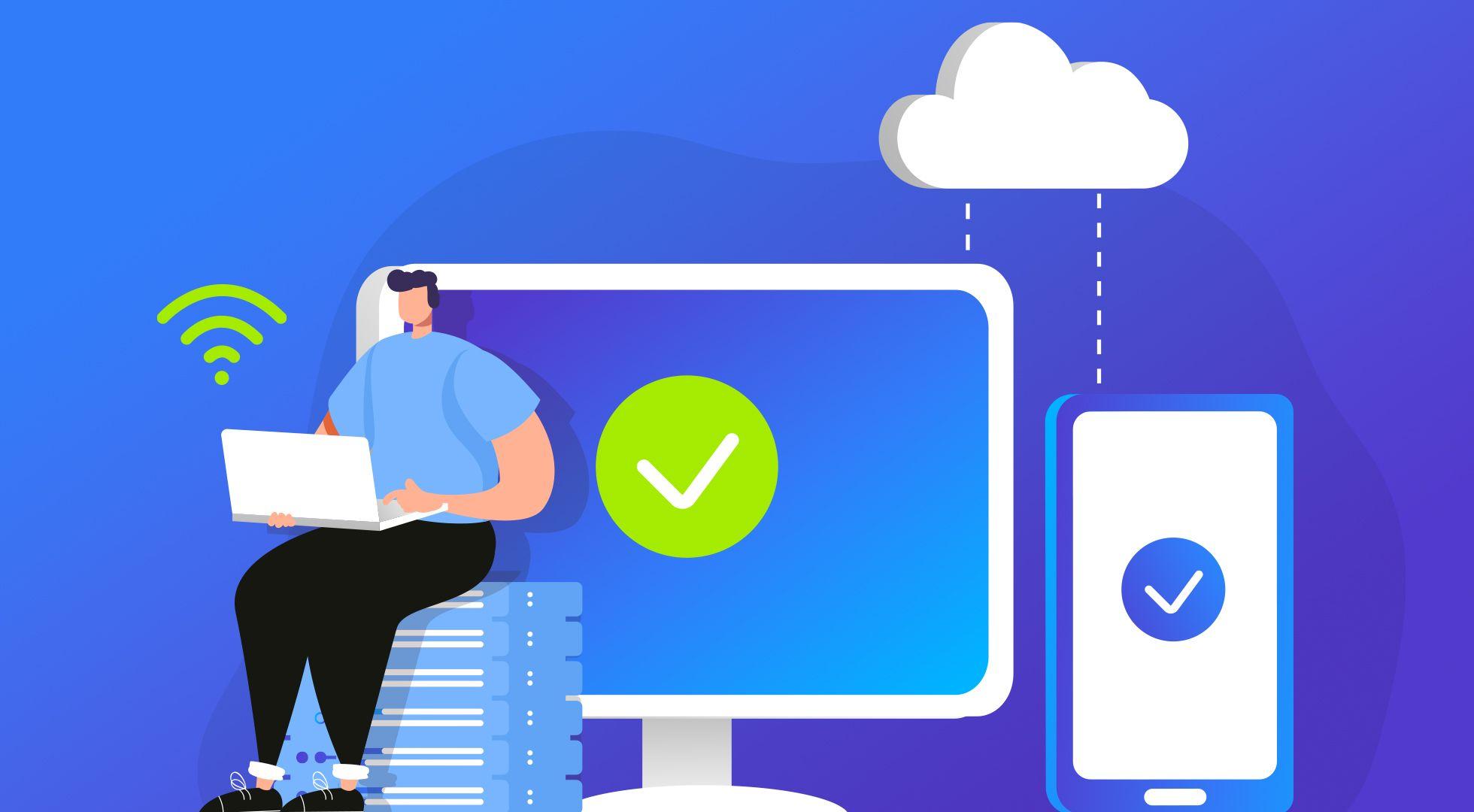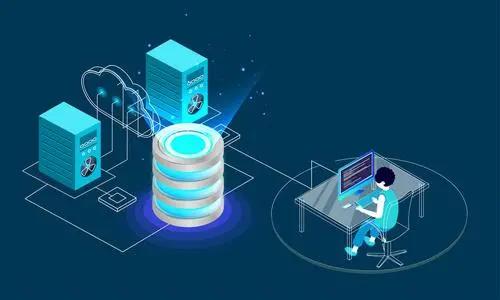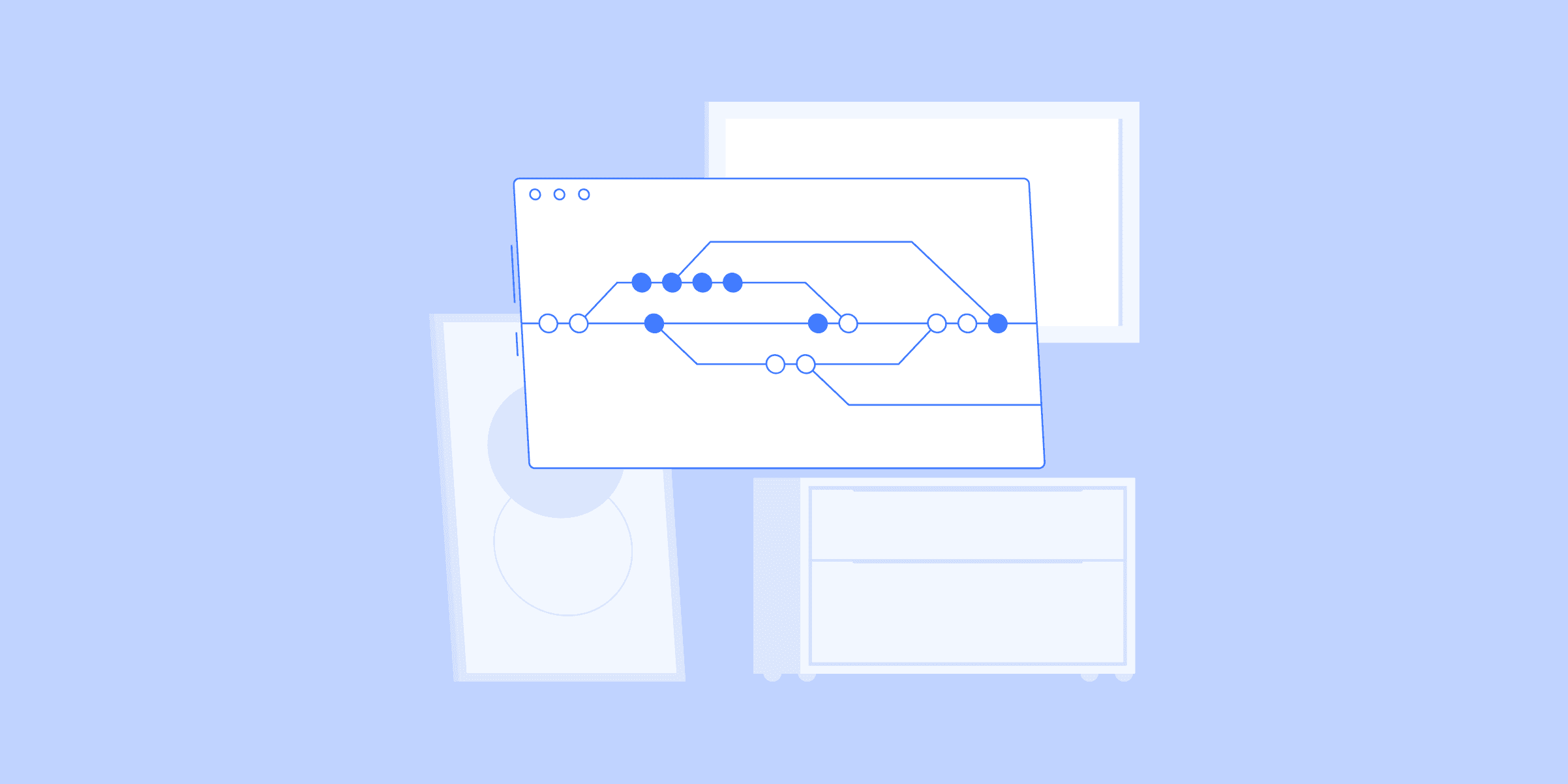
Understanding Proxy Servers: A Comprehensive Guide by LIKE.TG
As we navigate our day-to-day lives in this digital era, we often overlook the complex mechanisms that govern our seamless online experiences. One such essential, yet underappreciated mechanism is the 'proxy server'. To shed light on this crucial element and enhance your understanding of the digital landscape, LIKE.TG presents an in-depth guide on the importance, functionality, and strategic usage of proxy servers. Unpacking the Concept: What is a Proxy Server?At its core, a proxy server, or simply a proxy, serves as an intermediary between the end-user and the vast expanse of the internet. Acting as a 'gateway', it forwards web requests on behalf of users, thereby establishing a vital connection between the user and the internet. However, a modern proxy server's role goes beyond merely acting as an intermediary; it provides an array of enhanced functionalities, robust security measures, and privacy provisions. It not only amplifies network performance but also serves as a bulwark of data security.The Nuts and Bolts: How Do Proxy Servers Work?Each device connected to the internet has a unique identifier known as an Internet Protocol (IP) address. When you make a request, say to visit a website, the request is initially sent to the proxy server. This server then processes your request, forwards it on your behalf, retrieves the response, and finally, sends the information back to you.Throughout this process, proxy servers perform crucial functions like modifying request data to mask your IP address, encrypting data to ensure secure transit, and even blocking access to specific web pages based on rules set for the IP address. The Array of Benefits: Why Use a Proxy Server?The usage of proxy servers spans various applications, offering a host of advantages:1. Internet Usage Control: In an organizational setting, proxy servers allow the administration to regulate internet usage, prevent access to certain websites, and record all web requests, thereby maintaining a productive environment.2. Bandwidth Conservation and Speed Optimization: Proxy servers can cache or store data from frequently visited websites, reducing the bandwidth required to access these sites and improving network performance. 3. Privacy Protection: By substituting your IP address with a different one, proxy servers ensure your online activities remain private, adding a layer of anonymity to your digital interactions.4. Enhanced Security: With their ability to encrypt web requests and block access to known harmful sites, proxies act as a shield, protecting your data from potential threats.5. Access to Blocked Resources: Proxy servers provide a way around geographical or organizational content restrictions, granting users access to an uncensored version of the internet. Exploring the Varieties: Types of Proxy Servers The world of proxy servers is diverse, each type offering unique functionalities: 1. Transparent Proxy: This type of proxy openly communicates its status to the website while also passing along your IP address. Frequently utilized in businesses, public libraries, and schools, transparent proxies facilitate content filtering. 2. Anonymous Proxy: These proxies identify themselves as proxies to the website but do not reveal your IP address, helping maintain your anonymity and privacy online. 3. Distorting Proxy: This proxy operates by declaring itself as a proxy to the website and presenting a false IP address. This can be particularly useful for circumventing geographical content restrictions. 4. High Anonymity Proxy: High anonymity proxies take privacy up a notch by periodically changing the IP address they present to the web server, making it extremely challenging to track user activities. The TOR Network, for instance, is an example of a high anonymity proxy, offering a highly private and secure internet browsing experience. Conclusion: Proxies - The Unsung Heroes of Our Digital Lives In an era where our digital interactions are steadily on the rise, proxy servers have emerged as vital components of our online journeys. By acting as a buffer and a filter, they improve our online security, enhance network performance, and safeguard privacy. However, remember that choosing the right proxy server is essential to harness these benefits effectively. Your chosen proxy should offer full encryption, respect your privacy, and cater to your specific needs. Free proxy server services may sound appealing, but they may pose more risks than benefits. Stay informed, navigate with confidence, and make the most of your digital experiences. This insightful guide brought to you by LIKE.TG, a trusted name in digital security solutions, aims to empower you with comprehensive knowledge of proxy servers, enabling you to navigate the digital landscape safely and efficiently.
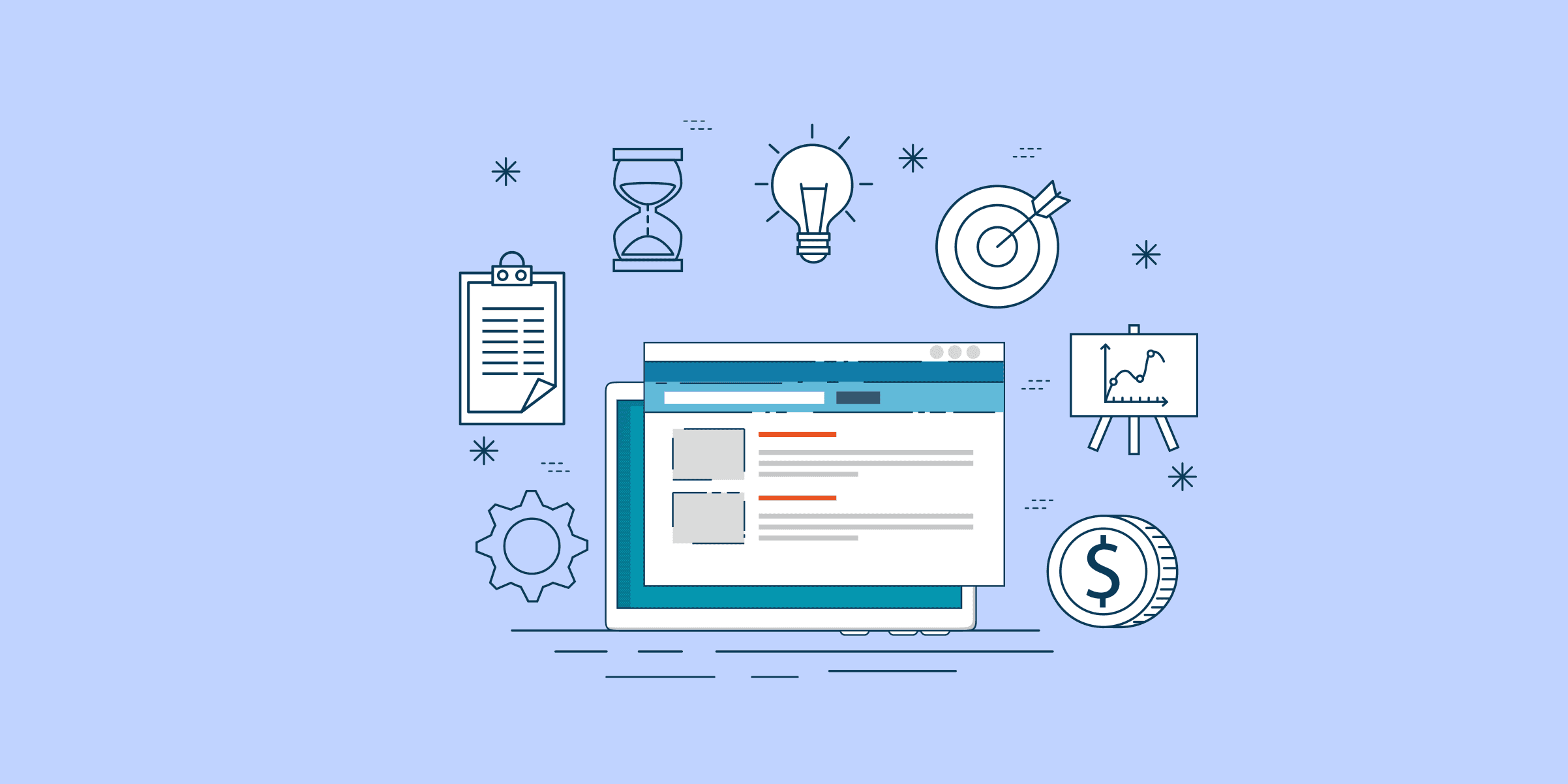
IP Address: A Comprehensive Exploration
I. Introduction to IP Addresses A. Definition of an IP Address An IP (Internet Protocol) address is a numerical label uniquely assigned to each device on a computer network that uses the Internet Protocol for communication. It functions like a postal address for devices, guiding data to its intended destination.B. Importance of IP Addresses IP addresses are essential for facilitating communication between devices, whether it's browsing the web, sending an email, or streaming video. Without them, computers wouldn't know where to send the requested data.C. Understanding the Network: OSI ModelHere is a table provides an overview of the OSI model's different layers and the protocols/technologies associated with each layer. It showcases how each layer contributes to the overall functioning of computer networks and communication systems.OSI LayerProtocols and TechnologiesDescriptionApplicationTelnet, FTP, TFTP, SNMP, HTTP, SMTP, NFS, DHCPApplication layer protocols for communication and data exchange between applications.TransportTCP, UDPTransport layer protocols for end-to-end communication, ensuring data delivery and flow.NetworkICMP, Routing Protocol (Static, RIP, OSPF), IP (ICMP, IGMP, RARP, ARP)Network layer protocols for addressing, routing, and data forwarding within networks.Data LinkEthernet, Frame-Relay, PPP/PPPOE, HDLCData link layer protocols for reliable data transmission between connected devices.PhysicalTwisted Pair Cable, Optical Fiber, Patch Cables, Patch PanelsPhysical layer components and mediums used for transmitting raw data over networks.- Application Layer: This layer deals with user-level protocols, allowing applications to communicate with each other over a network. It provides services such as file transfer (FTP), remote login (Telnet), web browsing (HTTP), email (SMTP), and more. - Transport Layer: Responsible for end-to-end communication and data delivery. TCP ensures reliable, connection-oriented communication, while UDP provides a connectionless, faster delivery option. - Network Layer: Manages logical addressing, routing, and data forwarding. ICMP handles error messages and diagnostic functions. Routing protocols (Static, RIP, OSPF) determine the best paths for data to travel. - Data Link Layer: This layer establishes and terminates links between nodes, ensuring reliable data transmission. Ethernet, Frame-Relay, PPP/PPPOE, and HDLC are protocols within this layer. - Physical Layer: Deals with the actual transmission of raw data bits over physical media. Components include twisted pair cables, optical fibers, patch cables, and patch panels, which connect devices physically. II. IPv4 Addressing System: Building the Foundation A. Classification of IPv4 Addresses IPv4 (Internet Protocol version 4) is the fourth version of the Internet Protocol, which uses 32-bit addresses. These addresses are divided into five classes, each designed to serve different types of networks:All AddressesPrivate AddressesClass A1.0.0.1-126.255.255.25410.0.0.0-10.255.255.255Large-scale networksClass B128.0.0.1-191.255.255.254172.16.0.0-172.31.255.255Medium-scale networksClass C192.0.0.1-223.255.255.254192.168.0.0-192.168.255.255Small-scale networksClass D224.0.0.1-239.255.255.254Multicast networksClass E240.0.0.1-255.255.255.255Reserved addresses1. Class A: These addresses are designated for large-scale networks such as multinational corporations or governments. The first 8 bits are used for network identification, leaving 24 bits for host addresses. 2. Class B: Designed for medium-scale networks like universities or large businesses, Class B addresses use 16 bits for network identification and 16 bits for host addresses. 3. Class C: Often used in small-scale networks like small businesses or residential networks, Class C uses 24 bits for network identification and 8 bits for host addresses. 4. Class D: Reserved for multicast networks, Class D addresses enable data to be sent to multiple recipients simultaneously rather than to a single destination. 5. Class E: These are experimental or reserved addresses that are not commonly used in public networks. B. Public and Private Addresses IP addresses can be categorized into two main types: - Public IP: These are globally recognized addresses that are used for communication over the Internet. Devices with public IPs can be accessed directly from anywhere on the Internet. They are often used by servers that host websites, email services, and more. - Private IP: These are used within local networks and are not directly accessible from the Internet. Private IPs allow devices within the same local network to communicate with each other but require NAT (Network Address Translation) to communicate with devices outside the local network. III. IPv4 Limitations and Solutions: Addressing the Challenges A. Address Exhaustion With the proliferation of Internet-connected devices, the finite pool of around 3.647 billion usable IPv4 addresses has led to a noticeable shortage. This limitation has spurred the need for creative solutions and the development of IPv6. B. Network Address Translation (NAT) NAT is a mechanism that allows multiple devices on a local network to share a single public IP address. This is essential for conserving global address space. Here's how it works: - Inside the Network: Devices are assigned private IP addresses.- Outside the Network: All devices appear to have the same public IP address.- Translation: The NAT device keeps track of which internal devices are communicating with the outside world, translating private IPs to the public IP, and vice versa. C. Port Mapping (PAT) Port Address Translation (PAT), often used in conjunction with NAT, further refines data routing by assigning specific ports for each device sharing an IP. It enables simultaneous connections from different devices within the local network to the Internet, using a single public IP. The process involves: - Mapping: Each internal device's IP and port are mapped to the public IP and a unique port.- Routing: When data returns, the PAT device looks at the destination port and routes it to the correct internal device based on the previously established mapping. By employing these solutions, IPv4 has managed to sustain the growth of the Internet, despite its inherent limitations. These mechanisms have been vital in bridging the gap until the broader adoption of IPv6, offering greater address space and more advanced features. IV. IPv6: The Future of IP Addressing A. The Need for IPv6 As the Internet has grown, the limitations of IPv4's 32-bit address space have become apparent, with only around 3.647 billion usable addresses. IPv6, utilizing a 128-bit address, offering approximately 3.4 x 10^38 addresses, provides a robust solution to this exhaustion, allowing for an almost infinite number of unique addresses. B. Transition Strategies from IPv4 to IPv6 Transitioning from IPv4 to IPv6 is not a simple switch; it involves various strategies: 1. Dual Stacking: This method allows for the simultaneous operation of IPv4 and IPv6, meaning devices can communicate using either protocol. It ensures compatibility but requires significant configuration. 2. Tunneling: By encapsulating IPv6 packets within IPv4, this method allows IPv6 packets to travel across an IPv4 network. It's like sending a letter in a different envelope, where the inner envelope is IPv6 and the outer one is IPv4. 3. Translation: This involves converting IPv6 packets into IPv4 and vice versa. It's a crucial approach for networks that have a mixture of IPv4 and IPv6-enabled devices. C. Benefits of IPv6 IPv6 offers various improvements and benefits over IPv4: 1. Increased Address Space: The expanded address space is sufficient for practically unlimited devices, offering flexibility and scalability. 2. Simplified Processing: IPv6's header is simpler than IPv4's, enhancing efficiency in processing and routing. 3. Enhanced Security: IPv6 includes built-in encryption and authentication features, offering a more secure communication framework. V. Applications and Use Cases: IP Addresses in Action A. Home Networking IPv4's NAT (Network Address Translation) allows multiple devices within a home to share one public IP. This is vital for household networks, where numerous devices may need Internet access but only one public IP is available. B. Business Networking Public IPs are critical in hosting services like websites, email servers, and other online platforms. The increasing need for IPv6 is especially apparent in businesses that must accommodate an expanding number of devices and services. C. Internet Service Providers (ISPs) ISPs play a central role in managing and distributing public and private IPs to their customers. With the transition towards IPv6, they must also facilitate the implementation and support of the newer protocol. VI. Challenges and Considerations in the IP World A. IPv6 Adoption Challenges Transitioning to IPv6 poses several obstacles: 1. Incompatibility with IPv4: Existing IPv4 systems may require additional technologies or modifications to support IPv6, leading to complexity. 2. Infrastructure Costs: Investments are necessary for hardware and software that supports IPv6, posing a financial challenge for some organizations. 3. Educational Barriers: Training for IT professionals in understanding and implementing IPv6 can be time-consuming and costly. B. Security Considerations IP addresses are central to network communication, but they also come with security concerns: 1. IP Spoofing: This involves forging the IP address of a device, potentially allowing malicious entities to masquerade as a trusted device. 2. Security Policies: Robust protections must be in place to safeguard IP-based communication. This includes firewalls, encryption, and continuous monitoring to detect and respond to any suspicious activities. In conclusion, the transition from IPv4 to IPv6 is a complex yet essential evolution in the world of IP addressing. It reflects the ongoing innovation in networking technology, catering to the ever-growing demands of connectivity and security in our digitally interconnected world. VII. The Tale of the Digital City: An Analogy In the digital realm, imagine a bustling city named Netropolis. This city reflects the evolution of IP addressing, from its early days to its current complexity. The journey of Netropolis is a vivid analogy for understanding IP addresses, making the concept more accessible. A. The Birth of a Small Network Village Once, Netropolis was a small village with only a few computer inhabitants. They communicated through a tangled web of cables, leading to confusion. A wise inventor, Switch, created a central hub, assigning unique IP addresses to each computer. Like house numbers in the real world, these IP addresses guided messages to their proper destinations. B. Expansion to a Grand City As the village grew into a city, neighborhoods emerged, representing local networks. Routers, acting as gateways, connected these neighborhoods. When IPv4 addresses began to run out, the city adopted IPv6, allowing for an almost unlimited number of unique addresses. This phase of growth mirrors the transition from IPv4 to IPv6 in the real world. C. The Rise of ISPs Netropolis's expansion was facilitated by Internet Service Providers (ISPs), akin to city builders. They constructed pathways, maintained connectivity, and innovated to allow more citizens to join. The ISPs' role reflects the real-world coordination required to manage public and private IPs, ensuring that the digital city thrives. D. Challenges and Triumphs The story of Netropolis is not without challenges. Issues like IP exhaustion, security concerns, and the transition to a new addressing system were met with ingenuity and adaptability. The introduction of NAT, the use of IPv6, and robust security measures were innovative solutions, illustrating human creativity in overcoming technological hurdles. E. Netropolis Today Netropolis stands as a marvel of digital engineering, encapsulating the journey of IP addresses. From a small village's simple organization to a grand city's intricate structure, the story underscores the importance of forward-thinking and adaptability. It serves as a metaphorical reminder that in our complex technological world, creative solutions can overcome seemingly insurmountable challenges. Just as house numbers guide mail to the right doors, and roads connect distant towns, IP addresses and networking technologies facilitate seamless communication in our digital world. The tale of Netropolis adds life and relatability to the technical concept of IP addresses, inspiring appreciation for the elegant complexity that enables our interconnected lives. VIII. Conclusion and Final Thoughts IP addressing, from its foundational IPv4 system to the nearly limitless potential of IPv6, remains at the core of our interconnected world. The transition to IPv6 marks a significant milestone, reflecting human ingenuity and adaptability. The engaging narrative of Netropolis underscores the importance of organization, innovation, and creative problem-solving in overcoming technological challenges. As the digital landscape continues to expand, so will the systems enabling our global connectivity, a journey defined by collaboration, foresight, and a collective ambition to remain interconnected in an ever-changing digital universe.

IP Addresses: Understanding IPv4 and IPv6
Introduction Internet Protocol (IP) addresses play a fundamental role in network communication, enabling devices to identify and interact with each other across the Internet. This article provides an in-depth analysis of the two main versions of IP addressing: IPv4 and IPv6. IPv4 (Internet Protocol Version 4) Definition IPv4 is a 32-bit address format introduced by the Defense Advanced Research Projects Agency (DARPA) in 1981. It became the standard for internet communication and is represented by four decimal numbers separated by dots (e.g., 189.123.123.90). Structure - 32-bit Address: Composed of 32 binary digits, grouped into four octets.- Classes: Divided into five classes (A, B, C, D, E) to define the network's size and purpose.- Subnetting: Supports Variable Length Subnet Masking (VLSM), allowing flexible network design. Limitations - Address Exhaustion: With a maximum of 4.29 billion addresses, IPv4 suffers from address scarcity due to the Internet's growth.- Security: Lacks inherent security features, relying on external measures.- Fragmentation: Sender and forwarding routers perform fragmentation, adding complexity. IPv6 (Internet Protocol Version 6) Definition IPv6 is a 128-bit addressing system, introduced in 1995 by the Internet Engineering Task Force (IETF) as a successor to IPv4. It is represented as eight hexadecimal numbers separated by colons. Structure- 128-bit Address: Greater address space accommodates future growth.- Simplified Header: A fixed 40-byte header streamlines processing.- Extension Headers: Allows optional features without complicating the main header.- Address Configuration: Auto and renumbering capabilities enable easier network management.Benefits- Scalability: 3.4×10^38 possible addresses cater to future Internet expansion.- Enhanced Security: IPSEC is an inbuilt feature, ensuring data integrity and privacy.- Mobile Device Support: Offers efficient and secure connections for mobile devices.- Flow Labeling: Facilitates Quality of Service (QoS) by identifying packet flows.Comparing IPv4 and IPv6FeatureIPv4IPv6Address Length32-bit128-bitConfigurationManual and DHCPAuto and renumberingAddress ClassesA, B, C, D, ENoneFragmentationSender and routersOnly by the senderSecurityExternalIPSEC inbuiltTransmission SchemeBroadcastMulticast and anycastVLSM SupportYesNoHeader Size20-60 bytes40 bytes fixedConversionCan convert to IPv6Not all IPv6 can convert to IPv4Example66.94.29.132001:0000:3238:DFE1:0063:0000:0000:FEFBTransitioning Between IPv4 and IPv6 Migrating from IPv4 to IPv6 involves careful planning and execution, as it's not merely an upgrade but a significant architectural shift. Transition strategies often include: - Dual-Stack: Allows devices to operate both IPv4 and IPv6 simultaneously.- Tunneling: Encapsulates IPv6 packets within IPv4 for transmission across an IPv4 network.- Translation: Facilitates direct communication between IPv4 and IPv6 devices using a translation mechanism. Conclusion In the contemporary digital landscape, where the transition from IPv4 to IPv6 has become a significant point of discussion, LIKE.TG emerges as a unique and vital service. By choosing to specialize in IPv4, LIKE.TG emphasizes the importance and ongoing relevance of this protocol, even as IPv6 continues to gain traction. LIKE.TG's services extend beyond merely supplying IPv4 addresses. They provide solutions tailored to businesses and individual users who continue to rely on IPv4's compatibility with existing technologies. This focus on IPv4 allows LIKE.TG to offer unparalleled expertise and innovative solutions within this domain. Whether it's navigating the complexities of managing IPv4 resources in a world increasingly leaning towards IPv6 or providing insight into the best practices for IPv4 utilization, LIKE.TG is positioned as a leader in this field. In a world where technological advancements often eclipse the established norms, LIKE.TG's commitment to IPv4 is a reminder of the importance of continuity and expertise. For those still engaged with IPv4 or seeking a seamless transition in the future, LIKE.TG's services offer an indispensable resource, bridging the old and new with finesse and innovation. Ensuring a seamless digital experience.

Unveiling the Power of SOCKS5 Proxies: Versatility, Security, and Beyond
Introduction:In the intricate tapestry of internet communication, where protocols weave the threads of connectivity, SOCKS5 proxies emerge as dynamic players, reshaping the way data traverses the digital landscape. As the internet operates atop foundational protocols like ICMP, TCP, and UDP, SOCKS5 proxies stand at the crossroads of innovation, offering a conduit for versatile data transmission. This blog embarks on a journey to unravel the origins and evolution of SOCKS5 proxies, delving into the intricate layers of internet protocols that underpin their functionality. We will explore the diverse applications that SOCKS5 proxies facilitate, from concealing IP addresses to enhancing video calls, gaming experiences, and torrenting endeavors. Furthermore, we will dissect the unique advantages that set SOCKS5 proxies apart from their HTTP counterparts, while also addressing the encryption challenge that surrounds them.Embarking on a journey to comprehend the essence of SOCKS5 proxies requires a foundational understanding of the bedrock upon which the internet stands - protocols. These protocols serve as the communication framework that allows data to traverse the vast digital landscape. At the core of this digital realm are three pivotal protocols: Internet Control Messaging Protocol (ICMP), Transmission Control Protocol (TCP), and User Datagram Protocol (UDP). ICMP: The Network's Sentinel Among these protocols, ICMP emerges as a sentinel of the network, responsible for monitoring its health and status. This control protocol serves as the messenger that conveys critical network information. You might have encountered its most famous utility - the "ping" command. Through ICMP, devices communicate their operational status, revealing whether they're reachable or not. TCP and UDP: The Dynamic Duo As our journey into protocols deepens, the spotlight shifts to the dynamic duo - Transmission Control Protocol (TCP) and User Datagram Protocol (UDP). These two protocols constitute the backbone of data transmission, facilitating the exchange of information between devices across the internet. TCP: Order and Precision TCP, often likened to a meticulous conductor, orchestrates data transmission with order and precision. It ensures that data packets traverse the digital realm in an organized manner, arriving at their destination with accuracy. By optimizing performance and meticulously error-checking, TCP guarantees that data reaches its intended endpoint intact. UDP: The Champion of Real-Time Communication Contrasting TCP's methodical approach, User Datagram Protocol (UDP) emerges as the champion of real-time communication. In scenarios where speed and immediacy supersede order, UDP takes the stage. It adopts a connectionless approach, enabling swift transmission of data. While this speed sacrifices some data integrity and organization, it is the preferred choice for applications like online gaming and real-time streaming. Enter SOCKS5 Proxies: Defining the Protocol With a foundational understanding of internet protocols in place, the curtain rises on the SOCKS5 protocol. "Socket Secure," abbreviated as SOCKS, is a protocol that revolutionizes data transmission by introducing an intermediary entity - the SOCKS proxy server. This server acts as a bridge, facilitating data transmission between devices and servers located behind firewalls. The SOCKS proxy server, positioned as the intermediary, orchestrates the seamless exchange of network packets between clients and their intended servers. SOCKS5: An Evolution in Protocol Advancements Within the realm of protocols, SOCKS5 proxies emerge as a testament to evolution and innovation. This iteration of the SOCKS protocol embodies a paradigm shift, introducing a constellation of critical features that propel data transmission to new horizons. Comprehensive Authentication Options: A Multifaceted Approach One striking facet of SOCKS5 is its comprehensive authentication framework. In contrast to its predecessors, this iteration offers an array of authentication mechanisms. This diversity accommodates varying security needs, ensuring that each connection can be tailored to the appropriate level of protection. Support for IPv6 Addresses: Pioneering the Future As the internet embraces the era of IPv6 addresses, SOCKS5 proxies march in stride with this evolution. Seamlessly integrating with IPv6 addresses, SOCKS5 proxies lay the groundwork for seamless communication in the digital landscape's future. Remote DNS Lookups: Elevating Convenience SOCKS5 proxies transcend conventional boundaries by introducing the capability of remote Domain Name System (DNS) lookups. This innovation streamlines communication by enabling proxies to independently resolve DNS queries. The result is an enhanced user experience with reduced latency and increased efficiency. UDP Compatibility: Paving the Way for Real-Time Realities A defining hallmark of SOCKS5 proxies is their support for UDP protocols alongside the traditional TCP. This compatibility enriches the proxy's usability in scenarios demanding real-time communication and dynamic data transmission. With this capability, SOCKS5 proxies become indispensable tools for online gaming, video streaming, and any application reliant on swift data delivery. The emergence of SOCKS5 proxies signifies more than a protocol evolution; it embodies the spirit of adaptability, security, and efficiency. As we delve deeper into the realm of proxies, the prowess of SOCKS5 proxies shines as a beacon of innovation in the ever-evolving landscape of internet protocols. The Versatility of SOCKS5 Proxies Within the realm of internet protocols, SOCKS5 proxies stand as versatile powerhouses, offering a panoply of applications that cater to diverse needs and scenarios: IP Address Concealment: A Shield of Anonymity At the core of SOCKS5 proxies lies their ability to provide a shield of anonymity. By ingeniously rerouting data traffic, these proxies grant users a new IP address, effectively cloaking their original identity. This dynamic feature becomes a sanctuary for privacy-conscious individuals, ensuring that their online activities remain discreet and untraceable. Facilitating Video Calls and Streaming: Seamless Connectivity The collaboration between SOCKS5 proxies and communication platforms like Skype and Telegram is a testament to their adaptability. These proxies create a conduit for smooth and uninterrupted video calls, transcending geographical barriers. Moreover, in the realm of online streaming, SOCKS5 proxies join forces with platforms like Twitch, granting users unrestricted access to captivating content. Torrent Downloads: Torrenting Made Efficient SOCKS5 proxies establish their prowess as efficient companions for torrent enthusiasts. Peer-to-peer messaging software, the heartbeat of torrenting, finds an ideal partner in SOCKS5 proxies. These proxies optimize data transmission, accelerating the torrent download process while preserving anonymity. Gaming Adventures: Unveiling New Horizons While the exploration of SOCKS5 proxies in the realm of online gaming is in its infancy, intriguing possibilities emerge. Rumors swirl about these proxies potentially enhancing online gaming experiences. Although the extent of their impact requires further investigation, the gaming community's curiosity remains piqued. Evasion of Restrictions: The Key to Unlocked Content SOCKS5 proxies emerge as the key to circumventing digital barriers. With adeptness in bypassing firewalls and geo-restrictions, they empower users to seamlessly access content that might otherwise remain out of reach. The digital world opens its doors, allowing users to explore and indulge in content from across the globe. The Distinctive Appeal of SOCKS5 Over HTTP Proxies Delving deeper into the realm of proxy protocols unveils the distinctive appeal of SOCKS5 proxies, setting them apart from their HTTP counterparts: Diverse Data Handling: Expanding Horizons One of the remarkable differentiators of SOCKS5 proxies lies in their prowess to handle a diverse array of data types. This transcends the limitations of HTTP proxies, which are often confined to specific data formats. SOCKS5 proxies break these boundaries, accommodating various data streams with finesse. Anonymity Reinforcement: Shielding Identity A striking feature of SOCKS5 proxies is their direct client-to-server connection mechanism. This approach heightens the shield of anonymity, ensuring that the user's original IP information remains concealed. Unlike HTTP proxies, which might inadvertently leak certain details, SOCKS5 proxies serve as robust guardians of identity. Traffic-Intensive Versatility: Navigating High Demands The realm of real-time data streaming and traffic-intensive activities finds a reliable ally in SOCKS5 proxies. With their adeptness in handling UDP protocols, these proxies excel in scenarios that demand swift and dynamic data transmission. Online streaming and gaming, with their insatiable appetite for real-time communication, find a compatible partner in SOCKS5 proxies. Navigating the Encryption Conundrum Yet, within the realm of SOCKS5 proxies, a conundrum of security emerges. The absence of standard tunnel encryption exposes them to the risk of data interception. This vulnerability amplifies the importance of cautious selection when considering SOCKS5 proxies for tasks that involve sensitive information. While their versatility is undeniable, users must balance it with the critical factor of data protection. As the digital landscape evolves, SOCKS5 proxies remain a versatile tool, adapting to varied needs while inspiring cautious exploration of their capabilities. Conclusion: In a digital era characterized by interconnectedness, privacy concerns, and the unquenchable thirst for versatile data transmission, SOCKS5 proxies offer a glimpse into the future of internet communication. Their ability to cloak identities, facilitate seamless connections, and navigate the intricacies of real-time data transmission showcases their adaptability and relevance. As we navigate the vast expanse of internet protocols and proxy mechanisms, SOCKS5 proxies stand as a testament to the continuous evolution of technology. While their versatility opens doors to a multitude of applications, the absence of standard encryption underscores the need for vigilant selection and usage. In the ever-evolving landscape of digital communication, SOCKS5 proxies carve a niche that combines innovation with caution, promising both opportunities and challenges for those who traverse the digital realm.

Mastering the Art of Data Harvesting: An In-depth Exploration of Web Scraping vs Web Crawling
In our data-centric society, the ability to harvest and analyze data effectively is pivotal to success. Two powerful methods employed for this purpose are web scraping and web crawling. Though these terms are frequently used interchangeably, they possess distinctive functions and applications. This comprehensive guide aims to clarify these techniques, allowing you to discern which one aligns best with your data acquisition needs. Disentangling Web Scraping and Web Crawling Web scraping and web crawling, while interrelated, cater to different data collection needs. Web Scraping primarily focuses on the extraction of data from websites. This process can be manual but is often automated with bots or web scrapers. It involves retrieving a webpage's HTML document, parsing it to comprehend the structure, and subsequently extracting the required data. In contrast, Web Crawling is a method of systematically exploring the internet or specific websites using automated software, colloquially known as a web crawler or bot. These crawlers visit websites, following the links present within a site's HTML structure to discover other webpages, whether on the same site or different ones. The scope of web crawling can range from a single website to the entirety of the internet. In essence, if web crawling is likened to a robot traversing every street in a city, web scraping would be the robot selectively collecting specific items from some streets. Analyzing Web Scraping vs. Web Crawling Understanding the divergences between web scraping and web crawling allows for informed decisions regarding the most suitable technique for your specific needs. Use Cases Web scraping shines when you need to extract specific data from a website or a collection of websites. It is extensively used for tasks like price comparison, sentiment analysis, or harvesting contact information. On the flip side, web crawling is the go-to when you need to index or catalog numerous websites or discover links between various sites. It's a technique regularly employed by search engines to index web pages for user discovery. Scalability While web scraping often operates on a smaller scale, targeting specific information from selected webpages, web crawling tends to function on a much larger scale, even encompassing the whole internet. Data Analysis Data acquired through web scraping is typically structured and specific, primed for direct analysis or utilization. In contrast, data obtained from web crawling, especially when conducted across the entire internet, can be massive and unstructured, necessitating further processing for utility. Practical Applications in the Real World Both web scraping and web crawling offer a multitude of practical applications. Businesses, researchers, and various other entities leverage these techniques extensively. Web Scraping Applications 1. Competitor Analysis: Firms can use web scraping to collect data about their rivals, such as prices, marketing strategies, or customer reviews. 2. Lead Generation: By extracting contact information from websites using web scraping, businesses can generate potential leads. 3. Sentiment Analysis: Organizations can employ web scraping to collect customer reviews and social media posts to gauge customer sentiment towards their products or services. 4. E-commerce: Online retailers can utilize web scraping to monitor their competitors' prices and modify their own accordingly. Web Crawling Applications 1. Search Engines: Google, Bing, and other search engines use web crawling to index the internet, returning pertinent search results to users. 2. Data Mining: Firms may employ web crawling to gather large amounts of data from the internet for analysis, identifying patterns, trends, and correlations. 3. SEO: Businesses might use web crawling to understand how search engines index their website, leading to enhancements in their SEO strategies. Navigating Legal and Ethical Landscapes Before embarking on web scraping or web crawling, it's crucial to contemplate the legal and ethical implications. Legal Compliance Compliance with legal parameters is vital when scraping or crawling. Websites have their own rules about the permissible use of their data. Some sites explicitly state in their Terms of Service that data scraping is prohibited. Disregarding these rules could lead to legal ramifications. Respecting Privacy When handling personal data, it's essential to respect privacy. Personal data should be managed in compliance with relevant data protection laws, such as the General Data Protection Regulation (GDPR) in the European Union. Ethical Conduct Even if scraping or crawling a website is legally permissible, it may not be ethically correct. If a website is not publicly accessible (e.g., requires login), scraping its data could be deemed unethical, even if it isn't illegal. Concluding Remarks Web scraping and web crawling are potent tools for gleaning data from the internet. The choice between the two hinges on your unique needs. If your interest lies in collecting specific data from a website, web scraping might be your best bet. Conversely, if you seek to explore and index vast quantities of data from the internet, web crawling could be more fitting. Regardless of the method you select, remember to adhere to best practices, respect the guidelines of the websites you interact with, and consider the privacy and rights of the individuals whose data you're accessing. Being informed and respectful in your data gathering endeavors invariably leads to the most optimal outcomes.
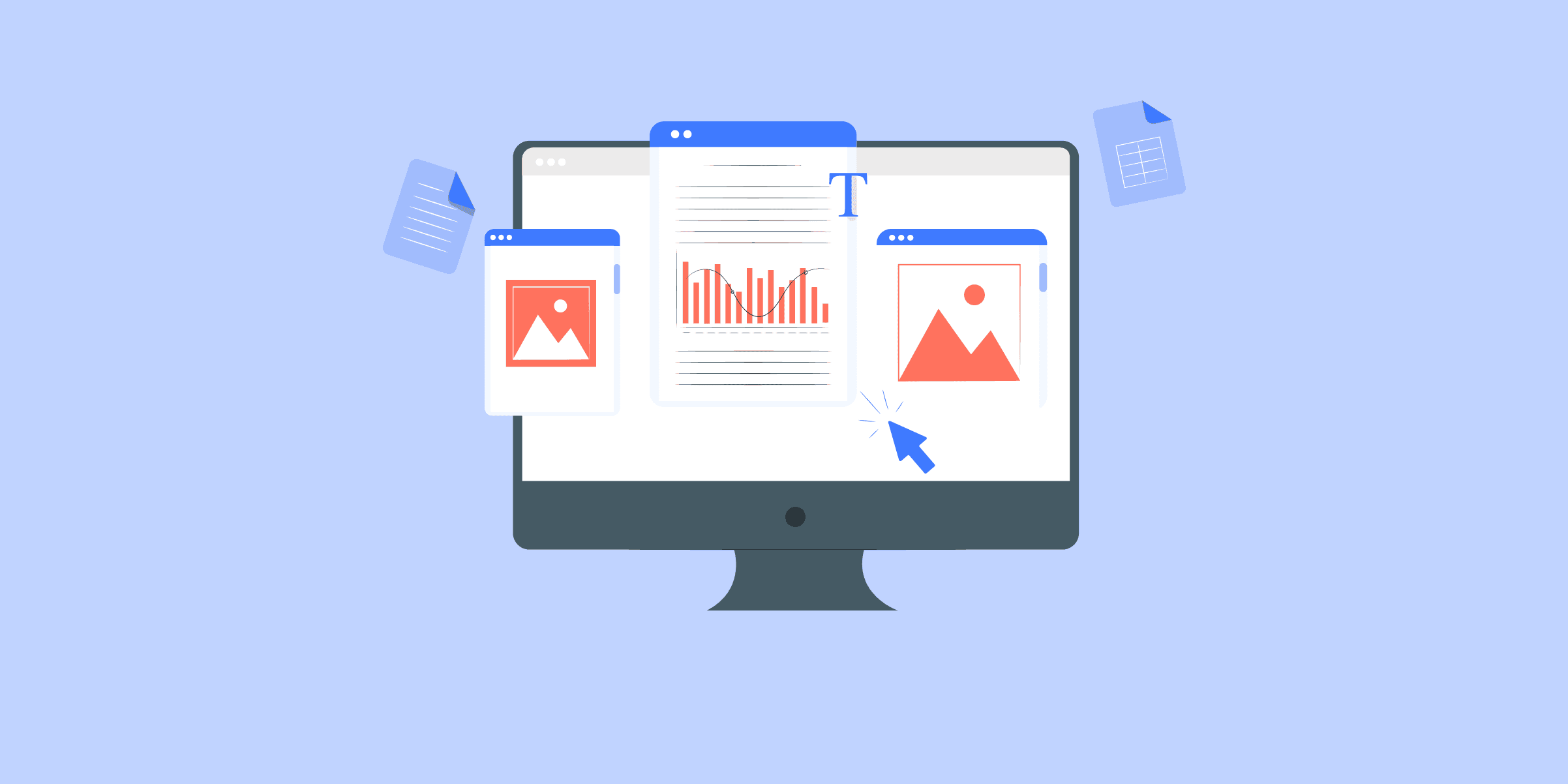
The Power of Data Aggregation: Unlocking Value in the Information Age
In the era of digital revolution, every action leaves a digital footprint - be it a website visit, an online purchase, or even a simple status update on social media. Consequently, businesses and organizations across various sectors are dealing with an unprecedented volume of data. The challenge, however, lies in harnessing this raw data and transforming it into actionable insights. This is where the concept of 'data aggregation' comes into play.What is Data Aggregation?Data aggregation is a process in which information is gathered and presented in a summarized format. This technique is crucial for handling extensive datasets, helping organizations to analyze complex data and extract valuable insights that inform strategic decision-making. Data aggregation can be performed on different types of data, such as numerical, categorical, or binary data.The aggregation process involves several steps: data extraction from various sources, processing using specific statistical methods, and presenting the aggregated data in an easy-to-understand format. For instance, 'sum,' 'average,' 'max,' 'min,' and 'count' are common aggregation functions that help users understand the nature of the data and make meaningful inferences.Manual vs. Automated Data Aggregation: The Quest for EfficiencyTraditionally, data aggregation was performed manually, which often proved to be a time-consuming and error-prone process. As businesses grow and data proliferates, manual aggregation becomes unsustainable due to scalability issues, slower time-to-market, and the potential for human error.Automated data aggregation, on the other hand, increases efficiency by eliminating these issues. With advancements in artificial intelligence and machine learning, automated aggregation tools are able to handle larger datasets, process data faster, and provide more precise results. Additionally, automation reduces the risk of omission of vital data sources or patterns, a common issue in manual processes.Choosing the Right Data Aggregation ToolSelecting the right data aggregation tool can be a complex process, largely depending on an organization's specific needs. Factors such as industry type, data volume, technical capabilities, and the level of required automation play a crucial role in the selection process.It's important to thoroughly evaluate an organization's requirements and seek advice from data professionals before investing in a tool. This careful planning can help ensure the selected product aligns with the organization's goals and maximizes the benefits of data aggregation.Applications of Aggregated DataAggregated data plays a crucial role across industries. In the retail sector, for instance, it helps in competitive analysis and targeted marketing. For the travel industry, it provides insights into changing travel preferences and market trends. Similarly, healthcare organizations use aggregated data for disease monitoring, predicting health trends, and enhancing patient care.Moreover, in marketing, data aggregation provides insights into the effectiveness of marketing campaigns across different segments and audiences. By analyzing aggregated data, businesses can make well-informed decisions, improve operations, and drive innovation.Navigating the Challenges of Data AggregationWhile data aggregation offers significant benefits, it also brings a set of challenges. One primary concern is data privacy. As aggregation often involves personal information, it's essential to ensure the consent of individuals and comply with data privacy laws.Another concern is data quality. Ensuring the accuracy, completeness, and consistency of data can be difficult, especially when dealing with large, diverse data sources. Businesses must implement stringent data quality checks to prevent incorrect or misleading insights.The Interplay Between Data Aggregation and IP ProxiesIn the grand scheme of data aggregation, IP proxies LIKE.TG play a critical role in facilitating efficient and comprehensive data gathering from the web. Data aggregation involves the collection, processing, and presentation of data from various sources, providing valuable insights and information to drive informed decision-making. IP proxies aid in this process by enabling large-scale, anonymous data collection from diverse web sources. They allow data aggregation tools to bypass website restrictions, access location-specific data, and prevent IP blocking or banning due to high-volume requests, which are common when aggregating data. With the ability to rotate or switch between a pool of IP addresses, proxies ensure continuous, uninterrupted data gathering, thereby enhancing the effectiveness of data aggregation. Thus, IP proxies serve as vital tools in the data aggregation pipeline, enhancing the efficiency, scope, and success of data collection endeavors.The Future of Data AggregationAs we move further into the information age, the role of data aggregation will only continue to grow. Future aggregation tools, powered by advanced AI and machine learning algorithms, will handle larger and more complex datasets, providing even more precise and actionable insights.In conclusion, data aggregation is a powerful tool in the era of big data. By harnessing this technique, organizations can unlock the full potential of their data, drive strategic decision-making, and gain a competitive edge in their respective markets.

LIKE.TG Meets SwitchyOmega: A Comprehensive Guide to Enhancing Your Proxy Browsing Experience
In a world where access to information is sometimes limited by geographical restrictions, proxy management tools are essential for those who want to navigate the Internet without barriers. Two such tools that stand out in the crowd are LIKE.TG and SwitchyOmega. Let's explore what they are, how they work, and how you can use them to create an optimal browsing experience. What is SwitchyOmega? SwitchyOmega is a free browser extension, acting as a proxy management tool. Available for Google Chrome and Mozilla Firefox, this extension allows users to effortlessly enable and disable proxies through a clean user interface, eliminating tedious clicking. How Does Proxy SwitchyOmega Work? SwitchyOmega allows users to create multiple proxy profiles and switch between them as needed. The extension provides various options to manage proxy settings, including specifying proxy settings for different websites, automatically switching proxies based on the visiting website's URL, and handling HTTP, SOCKS5 proxy authentication. SwitchyOmega Modes: 1. Proxy Servers: These act as intermediaries between a user's computer and the Internet, helping to hide the IP address or bypass regional restrictions. 2. Auto Switch Mode: Allows users to automatically switch different proxies based on the visited website. 3. PAC Scenario Mode: Allows users to define proxy rules through a piece of JavaScript code, known as a PAC script. 4. Virtual Scenario Mode: A special mode in SwitchyOmega, allowing the creation of a scenario without actual proxy servers, typically used for combining other scenarios. With SwitchyOmega, users can manage and switch proxy settings more flexibly and efficiently to fit different network environments and needs. How to Set Up an auto switch Proxy in SwitchyOmega:1. Create Proxy Profile: Select the protocol (commonly HTTP) and enter the server's IP address or hostname and port. 2. Create Switch Profile: Click the “New profile” button on the left sidebar and choose the “Switch Profile” type. 3. Configure Auto Proxy Mode: This involves creating new profiles, adding conditions, setting a default proxy, and applying changes. Benefits of Automatic Proxy Mode:- Time-Saving: Automatically switches to the proper proxy.- Flexibility: Detailed rules for different sites or conditions.- Increased Security: Configures dedicated proxies for sensitive websites.- Custom Rules: Create complex rules, including using wildcards and regex. SwitchyOmega is a powerful feature for users requiring flexible and automated proxy management. Limitations and Considerations: While SwitchyOmega is convenient and free, it's essential to note that it does not provide anonymity or unblock websites by itself. It requires trusted proxy servers(LIKE.TG) or VPNs to be used in conjunction with SwitchyOmega. And as always, it is crucial to ensure online security by using trusted proxies. Integrating LIKE.TG with SwitchyOmega:LIKE.TG is a proxy service that allows users to connect through proxies in various locations, expanding access to content across the globe. When combined with the Auto Switch feature of SwitchyOmega, users can further optimize their experience by employing LIKE.TG proxies to automatically switch based on the visited website.Here's how to apply LIKE.TG proxy to SwitchyOmega's Auto Switch Mode:1. Obtain the LIKE.TG Proxies: Choose the desired proxy from LIKE.TG according to your needs.2. Create and Configure the Proxy Profile in SwitchyOmega: Use the LIKE.TG proxy details to create a new proxy profile, selecting the appropriate protocol and entering the IP address and port.(Here we only decribe the process of integrating SOCKS5 Residential Proxies of LIKE.TG, and LIKE.TG Proxy Service also provides Rotating Residential Proxies and Static Residential ISP Proxies. These proxy plans can also apply to SwitchyOmega)3. Set Up Auto Switch Mode: Define rules in the Auto Switch mode for specific domains or conditions using the LIKE.TG proxy.4. Apply and Test: Save the configurations and test the setup to ensure it's working as expected.By integrating LIKE.TG with SwitchyOmega, users can enjoy a seamless browsing experience that automatically connects through the optimal proxy based on their specific needs.Conclusion:SwitchyOmega, coupled with LIKE.TG, offers a robust solution for users seeking a streamlined and customized browsing experience. While SwitchyOmega facilitates proxy management, integrating it with LIKE.TG proxies brings it to a whole new level, allowing users to effortlessly switch between various proxies based on the site they are visiting. This combination not only saves time but ensures a more secure and flexible browsing experience. Make sure to handle these tools with care, considering the legal aspects, and always use trusted proxies. Happy browsing!

HTTP and HTTPS Proxies – A Comprehensive Guide to Understanding, Configuring, and Leveraging Proxies for Enhanced Security
IntroductionIn an era where our lives are intricately woven with the internet, HTTP and HTTPS proxies stand as pillars supporting the seamless, secure, and efficient functioning of our online world. These guardians of the digital realm ensure that communication between clients and servers happens smoothly, while providing unique benefits such as privacy protection, content management, and more. As we navigate this digital labyrinth, let's delve into the fascinating universe of HTTP and HTTPS, understanding their significance, advantages, and unique characteristics. What is HTTP?Hypertext Transfer Protocol (HTTP) can be likened to the veins of the internet, transferring files and information throughout the web. Serving as the underlying mechanism of web communication, HTTP's various versions, such as HTTP/1.0 and HTTP/1.1, represent evolutionary stages in its ongoing refinement and development. What is HTTPS?Taking a step towards fortified security, HTTPS (Hypertext Transfer Protocol over Secure Socket Layer) adds a protective armor to HTTP. By encrypting connections and meticulously verifying server identities through digital certificates, HTTPS becomes the shielded conduit for secure web interactions. HTTP Proxy: Your Internet Traffic Controller IntroductionImagine the internet as a sprawling city, bustling with traffic. In this analogy, the HTTP proxy is the skilled traffic cop, guiding the flow of information cars between your computer and various online destinations. But it's more than a mere traffic controller; it's a multi-faceted tool with remarkable benefits and some inherent limitations. From managing access to particular content to compressing data for faster transmission, the HTTP proxy is integral to the smooth functioning of the online world. Benefits of HTTP Proxy - Content Blocking: Acting as vigilant security guards, HTTP proxies can restrict unauthorized access to specific sites or content types. This provides organizations and individuals with control over what content can be accessed, promoting a safer and more focused online environment. - Compression: Akin to a magical compression chamber, HTTP proxies shrink data sizes. This allows for faster transmission and a more streamlined internet experience, particularly beneficial when bandwidth is limited or costs need to be controlled. - Caching: Think of this as creating express lanes for frequent destinations. By storing copies of often-visited content locally, HTTP proxies enable rapid access, enhancing user experience by reducing waiting times and server load. - Anonymity: Envision donning a digital cloak of invisibility. By masking your original IP address, HTTP proxies offer a veil of privacy in the vast online world. This can help protect against tracking, targeted advertising, and even potential cyber threats. Limitations of HTTP Proxy - Lack of Security: It's the Achilles' heel in the armor; HTTP proxies can't forward HTTPS data, leaving a vulnerability in handling secure information. This limitation makes them unsuitable for transmitting confidential or sensitive data that requires encryption. - Potential Performance Issues: Like city traffic during rush hour, poorly configured HTTP proxies can cause slowdowns and bottlenecks, affecting the overall network performance. Proper setup, maintenance, and capacity planning are crucial to avoid these issues. Configuring an HTTP ProxyCustomizing an HTTP proxy is like crafting traffic laws to suit your city's unique needs. It's an art and a science that involves adjusting various settings to ensure efficient data flow, content control, and optimal security alignment. Whether setting time limits for connections, restricting URLs, or employing specialized security protocols, configuring an HTTP proxy offers a blend of flexibility and control to meet diverse requirements. HTTPS Proxy: The Fortified Gatekeeper IntroductionWhere the HTTP proxy is a regular patrol officer, the HTTPS proxy is the SWAT team, specially equipped for secure, encrypted data transmission. Unlike its HTTP counterpart, the HTTPS proxy focuses on safeguarding sensitive information, ensuring a secure passage across the digital landscape. Benefits of HTTPS Proxy - Enhanced Security: Picture a digital fortress around your data. HTTPS proxies encrypt your information, like login credentials, personal details, or financial transactions, ensuring they are safely transported across the Internet. This encryption minimizes the risk of data interception by malicious entities. - Certificate Management: Acting like notary publics, HTTPS proxies authenticate and manage digital certificates. This process verifies the legitimacy of websites, fostering trust in online interactions, and preventing unsettling browser warnings that can deter users. - Monitoring and Filtering: Imagine an ever-watchful sentinel; HTTPS proxies provide oversight and control over HTTPS traffic. This ability enables organizations to align web traffic with company policies and security protocols, detecting potential threats, filtering content, and ensuring compliance with regulations. In conclusion, both HTTP and HTTPS proxies play vital roles in shaping our online experience. While HTTP proxies offer versatile control over content, efficiency, and anonymity, HTTPS proxies provide a fortified layer of security, making them essential tools for modern internet navigation. Their careful selection, configuration, and utilization enable a seamless, secure, and responsive internet journey. Proxy ActionsCreating proxy actions is like drafting traffic regulations. It's a detailed process, allowing adaptation to the ever-changing internet trends or specific organizational needs. - Client Proxy Action: Imagine a drawbridge for residents; this allows secure connections from internal clients to the internet. - Server Proxy Action: This is akin to a guest pass, permitting connections to internal servers from the world wide web. - Standard and Customized Proxy Actions: These represent the codified rules and personalized guidelines, shaping the traffic flow in alignment with modern internet dynamics and specific security considerations. ConclusionHTTP and HTTPS proxies are the unsung heroes of our online existence. They serve different roles, with HTTP excelling in areas like content control and efficiency, while HTTPS focuses on secure data handling. Understanding their unique capabilities allows companies to forge a digital strategy that's both secure and responsive. The strategic implementation of HTTP and HTTPS proxies isn't just a tech-savvy move; it's a masterstroke that elevates online experience to new heights. Whether safeguarding sensitive data, cloaking IP addresses, managing content, or facilitating web scraping, these proxies are tools of empowerment in the digital age. In the grand scheme of our interconnected world, the decision to use HTTP or HTTPS proxies is a pivotal one, shaping the very contours of an organization's online landscape. It's a choice that resonates with innovation, security, and efficiency, ensuring a robust, harmonious, and secure digital universe.

Brand Protection and Proxies: A Comprehensive Guide
Introduction With the rise of digitization and e-commerce, brand protection has become a complex challenge for businesses. Companies must be proactive in preventing unauthorized use of their intellectual property and understanding the tools at their disposal. This comprehensive guide will delve into brand protection, different kinds of brand infringements, and the essential role of proxies in safeguarding brands. Understanding Brand Protection Brand protection is the process and set of actions that a copyright owner takes to prevent third parties from making unauthorized use of their intellectual property. Consequences of brand infringement include loss of revenue and diminishing the brand's value. Different Types of Brand InfringementCounterfeitingCounterfeiting involves manufacturing or distributing goods that imitate a genuine brand name or intellectual property rights without consent. It can range from low-quality imitations to high-grade replicas that are indistinguishable from the original product. Example: Luxury brands like Gucci and Louis Vuitton constantly fight against counterfeiting, which significantly devalues the exclusivity and prestige of their products. Copyright InfringementCopyright infringement pertains to the unauthorized copying, distribution, or display of copyrighted works. It covers many areas, such as: Literary works (books, articles) Videos (movies, YouTube content) Images (photographs, illustrations) Sound recordings (music, podcasts) Example: A musician using a melody from another artist's song without permission can lead to copyright infringement claims. Trademark InfringementTrademark infringement occurs when another entity uses a word, phrase, symbol, or design that another business uses to distinguish its goods or services. This can confuse consumers and tarnish the reputation of the original brand. Example: A soda company using a logo very similar to Coca-Cola's distinctive script and color scheme may be accused of trademark infringement. Patent and Design TheftThis involves making, selling, or using patented products or unique designs without permission. In some industries, this is a widespread issue. Patent Theft: Making or selling an invention that has been patented by someone else. Design Infringement: Copying unique designs, often prevalent in the fashion industry. Example: Tech companies often find themselves in legal battles over patents, such as the well-known legal feud between Apple and Samsung over smartphone design patents. Real-Life ExamplesTesla Trademark Infringement Case in ChinaA man in China sued Tesla for 3.9 million euros on trademark infringement charges. He claimed that he had trademarked the "Tesla" name in English in September of 2009. This case highlights the complexities of international trademark laws, where names and logos might be protected in one jurisdiction but not in another. Outcome: The case prompted Tesla to negotiate a settlement, emphasizing the importance of due diligence in international brand protection. Introduction to Proxies and Brand Protection: An Essential Partnership In the ever-changing landscape of digital commerce, brand protection has become a pivotal concern for businesses. In this context, proxies act as valuable tools to ensure the integrity and reputation of a brand. Proxies: A Brief Overview Proxies act as intermediaries that provide anonymity by masking the user's IP address. They serve as a gateway between the user and the internet, allowing for secure and anonymous browsing. Proxies are instrumental in enabling various brand protection strategies, making them indispensable tools for businesses today. Why Proxies are Vital for Brand Protection 1. Monitoring and Detecting Infringements: Proxies enable access to websites from different geographical locations, uncovering unauthorized use of brand assets and enabling legal enforcement. 2. Web Scraping with Proxies: Proxies allow for the extraction of information from various websites. This helps in identifying fake websites or unauthorized sellers that might be illegally profiting from your products. 3. Enforcing Regional Rights: Proxies facilitate the viewing of content as it appears in different regions, ensuring compliance with regional laws and trademarks. 4. Brand Reputation Management: Proxies allow for unbiased customer sentiment analysis and continuous monitoring of brand image across various online platforms. 5. Combatting Online Fraud: Proxies aid in tracking down fraudulent websites, phishing scams, and other deceptive practices that can harm a brand's reputation. Types of Proxies for Brand Protection - Residential Proxies: These proxies use real IP addresses, making them ideal for stealthy web scraping, market research, and mimicking genuine user behavior. - Data Center Proxies: Hosted in data centers, these proxies are useful for accessing geo-restricted content, providing higher speeds, and scalability. - Mobile Proxies: Utilizing mobile devices' IP addresses, these proxies are beneficial for social media monitoring, localized searches, and mimicking actual user interactions. How Can Brand Infringement Happen? Rogue/Copycat Websites A growing concern for businesses is the rise of websites that imitate a brand's official website with subtly altered URLs. These fraudulent sites can take different forms: - Deliberate typos (e.g., "Twiter" instead of "Twitter") - Mimicking spellings but registered in another country (e.g., Twitter.com.sw) - Duplicating websites in your home market (e.g., a clone of the Angry Birds website in Finland) Recommendation It's essential to use web scrapers integrated with proxies to identify these fraudulent sites. Web scrapers utilizing proxies can overcome country-specific IP restrictions, allowing businesses to take legal action against unauthorized sellers or counterfeiters. Conclusion In today's interconnected world, brand protection is paramount, and proxies form a vital part of the arsenal in safeguarding intellectual property rights. The multifaceted approach combining proxies with other tools ensures that brands can monitor, detect, and act against infringements efficiently. From counterfeiting to patent theft, the landscape of brand protection is complex, and the wise use of technology, including proxy servers, is essential in maintaining the integrity and value of a brand. This guide sheds light on the fundamental aspects of brand protection and underscores the role of proxies in this vital endeavor.

Ad Verification in the Digital Age: Leveraging Proxies for Security, Accuracy, and Transparency
Ad Verification: An OverviewAd verification is a critical aspect of the digital advertising ecosystem, serving as a watchdog for ad placements and potential fraud. What it Does:- Ensuring Proper Display: Ad verification guarantees that ads are displayed to the right audience at the right time and in the right context. By doing so, it increases the efficiency of advertising campaigns, ensures brand safety, and helps achieve desired marketing goals. - Detecting and Preventing Fraud: Through sophisticated algorithms and continuous monitoring, ad verification can identify and prevent fraudulent activities such as fake impressions and clicks. This protection saves both time and money and helps in maintaining the trust and integrity of the advertiser’s brand. Methods:- Localized Ad Verification: This approach ensures that ads are personalized based on targeted regions, aligning with local preferences, regulations, and languages. Such personalization ensures higher engagement rates and relevance to the audience. - Ad Vendor Verification: Continuous monitoring of ad vendors helps to protect from fraud and maintain quality control over ad placements. It involves tracking and validating the reputation of publishers, ensuring that ads are placed on legitimate and reputable websites. Ad Fraud: An In-Depth Look Ad fraud is a major concern, affecting the very core of online advertising. Definition and Scope:- Deceptive Practices: Ad fraud refers to a range of deceptive practices aimed at siphoning off advertising spend. These include creating fake traffic, clicks, and impressions, often through the use of bots or fraudulent accounts. - Economic Impact: The global economic loss due to ad fraud is staggering, with billions of dollars lost annually. This theft not only affects advertisers but also has a ripple effect on publishers and consumers. - Tools for Prevention: The use of residential proxies, real IP addresses associated with specific geographic locations, is a common method to counteract ad fraud. Residential proxies help in creating a genuine appearance for traffic, making it difficult for fraudsters to identify and target. - Challenges and Solutions: The fight against ad fraud is ongoing and complex. It requires collaboration among advertisers, publishers, and tech providers. Leveraging advanced technologies, analytics, and a comprehensive understanding of the advertising landscape can create a more transparent, accountable, and secure ecosystem. Both ad verification and ad fraud prevention are central to maintaining a healthy, efficient, and ethical digital advertising landscape. By using sophisticated methods, tools, and collaboration, the industry can ensure that advertising reaches its intended audience without falling prey to fraudulent activities. Techniques of Ad Fraud Understanding the various techniques employed in ad fraud is crucial to combat it effectively. Some of the common fraudulent techniques include: - Impression Laundering: This refers to the act of hiding or improperly displaying ads to manipulate impressions. It masks the true source of the ad impressions, making them appear legitimate. - Faking Website Traffic: Fraudsters use bots and automated scripts to inflate visitor numbers artificially. This inflates the performance metrics of the website, attracting advertisers to buy placements. - Ad Click Fraud: This involves automating clicks on ads through malicious bots, causing the advertiser to pay for fake interactions that don’t result in genuine interest or sales. Importance of Ad Verification The significance of ad verification extends across multiple dimensions: - Protecting Brand Reputation: It ensures that ads are aligned with brand values by avoiding placements on inappropriate or controversial sites. - Legal Compliance: Ad verification adheres to industry regulations and laws, particularly in sensitive sectors like tobacco and alcohol advertising. - Budget Protection: By detecting and reporting fake clicks and bot interactions, it saves on unnecessary advertising expenditure. Challenges for Advertisers and Publishers The fraudulent landscape poses considerable challenges, including: - Ad Fraud: A diverse range of techniques used by fraudsters makes detection and prevention complex. - Limited Global Coverage: Different verification standards across regions create inconsistencies and loopholes. - Permanent IP Blocking: This disrupts continuous ad monitoring and can lead to incorrect conclusions regarding ad performance. Ad Verification Techniques - Agencies: Specialized firms offer comprehensive ad verification services. - IP Blocking: A technique to prevent fraudulent clicks, although it can be challenging as fraudsters may block IPs in return. How Ad Proxy Networks Help Verification Ad proxies offer unique solutions: - Uniqueness: Ad verification requires unique IP addresses to avoid detection and blocking. - Residential Proxy Networks: With millions of IPs, these networks prevent blocking or throttling. Features include realistic ad viewing, checking ad behavior, and simultaneous multi-location monitoring. Verifying Localized Ads with Proxies - International Campaigns: Proxies enable the verification of multilingual campaigns, ensuring consistency and compliance across different markets. Proxies for Ad Verification Different proxy solutions are tailored for ad verification: - Residential Proxies: A network that utilizes real-user devices globally. - Zero IP Blocking: Utilizes constantly rotating IPs for uninterrupted verification. - Vast Residential IPs Pool: Ensures anonymity and minimizes the chance of IP blocks. Case Studies: Industry Applications These real-world examples demonstrate the practical application of these principles: 1. Ad Verification and Compliance (Company A): - Goal: Ensure Pay-Per-Click traffic integrity. - Method: Utilization of Residential proxies for fraud detection. 2. Advertising Intelligence (Company B): - Goal: Improve advertising campaign accuracy. - Method: Application of Residential proxies for tracking and insights. 3. AI Social Media Influencer Advertising (Company C): - Goal: Campaign optimization. - Method: Adoption of Residential IPs for advertising feedback loops. General Benefits and Possible Risks - Benefits: Geo-specific verification, access to Geo-restricted Ads, enhanced anonymity. - Risks: Permanent IP Blocking and limitations in global access can pose challenges. Ad verification is a multifaceted process that ensures the authenticity, compliance, and effectiveness of online advertising. From protecting brand reputation to using advanced proxy networks, the landscape offers opportunities for transparency and efficiency, but it is not without its challenges and risks. These elements must be carefully managed to achieve advertising success in a rapidly evolving digital world. How to Choose Proxies for Ad Verification Choosing the right proxies for ad verification is vital for success in the digital advertising landscape. Key considerations include: - Type: Residential proxies are often preferred due to their anonymity and legitimacy. These proxies use real devices, allowing more organic interactions without risking detection. - Range of IP Locations: A broad spectrum of IP locations enables diverse geographical targeting, allowing advertisers to test campaigns in different markets and ensuring compliance with regional regulations. - Proxy Pool Quality: A high-quality proxy pool comprising various IP types ensures reliability and efficiency. It provides a more natural user experience, minimizing risks of being flagged as suspicious. - Price Consideration: Balancing quality and cost is essential. While affordability is crucial, a too-cheap solution may compromise quality and effectiveness. Overall Impact on Business and Industry Ad verification and the use of proxies have a profound impact both at the business and industry levels: - For Businesses: It facilitates innovative advertising strategies, enabling more precise targeting and fraud prevention. Companies can ensure their advertising dollars are spent effectively and reach the intended audience. - For the Industry: Ad verification shapes a more transparent and secure advertising ecosystem. By minimizing fraud and ensuring compliance, it fosters trust and integrity within the industry, benefiting all stakeholders. Companies Like LIKE.TG Specialized companies such as LIKE.TG provide tailored solutions: - Services: Offering Residential Proxies specifically designed for ad verification, LIKE.TG includes features like unlimited concurrent sessions and the imitation of organic user behavior. These capabilities ensure a realistic and reliable ad verification process, accommodating the unique needs of advertisers. Future of Digital Marketing The future of digital marketing is promising, with significant growth and evolution projected: - Market Projection: The digital marketing space is expected to reach an astonishing 786 billion U.S. dollars by 2026, reflecting the industry's vitality and potential. - Role of Verification: As the market expands, the role of ad verification in maintaining the integrity and effectiveness of advertising campaigns will become increasingly critical. It will ensure quality control, compliance, and efficiency in an ever-growing field. Conclusion Ad verification stands at the forefront of today's digital advertising industry, fostering targeted, secure, and robust campaigns. Through the use of Residential proxies, businesses can strategically monitor, protect, and enhance their advertising endeavors. Companies like LIKE.TG are instrumental in this landscape, providing tailored solutions to combat the intricate challenges of ad fraud. Coupled with the exciting market projections, ad verification and proxies are set to continue shaping a transparent and dynamic digital marketing future. The synergy between these elements crafts a resilient framework, steering the industry towards a thriving, ethical, and trustworthy era.
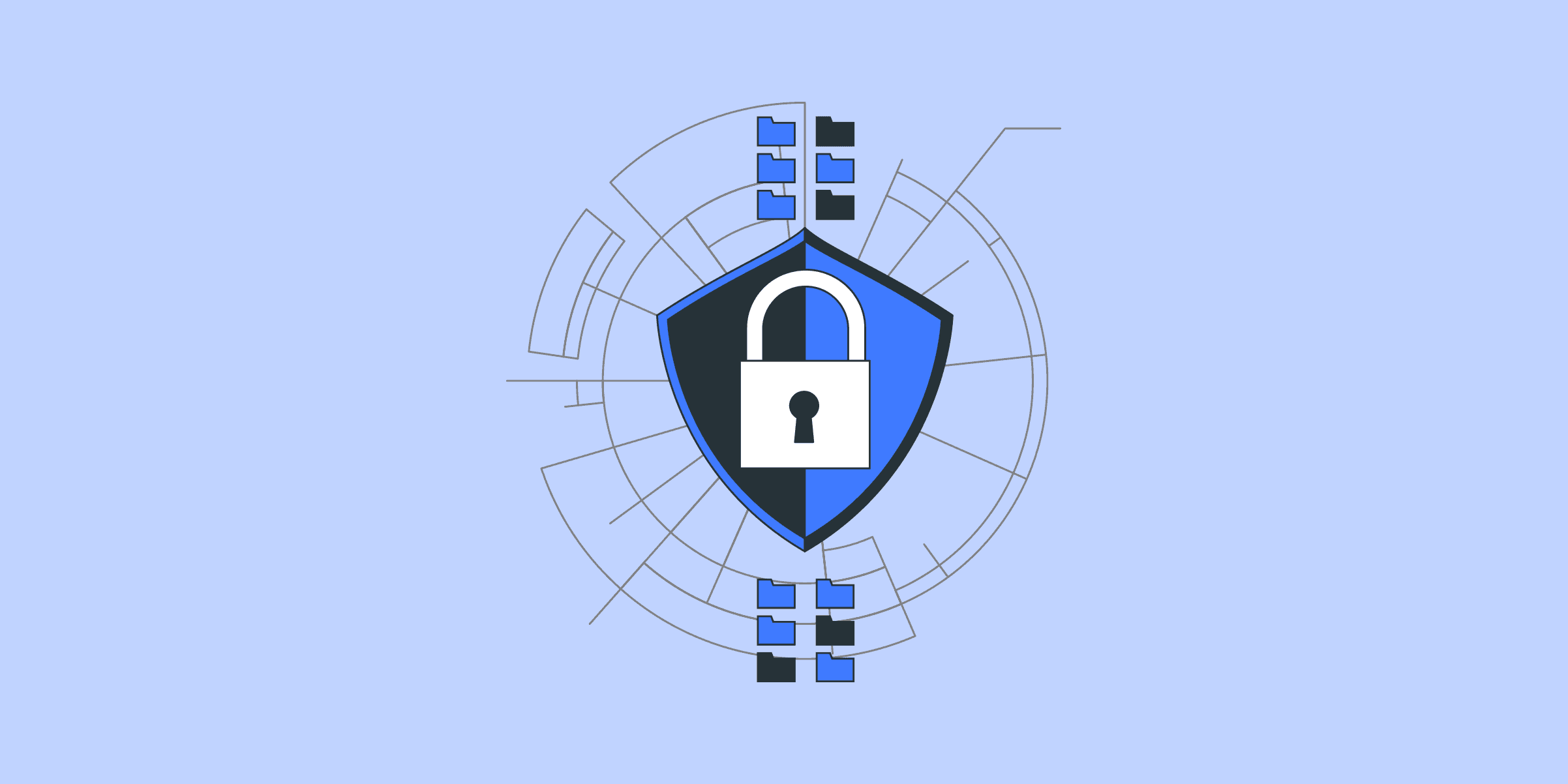
Proxies for Market Research: A Comprehensive Guide
Introduction In the ever-competitive business landscape, market research forms the cornerstone of informed decision-making. Proxies, playing a vital role in this research, have emerged as powerful tools for gathering valuable market insights. This guide delves into the intricate aspects of proxies in market research, uncovering their value, functions, and application. Importance of Data in Market Research Data is not merely information; it's the engine that drives modern businesses. With an impressive annual growth rate exceeding 30% for data-driven enterprises, its significance cannot be overstated. - Competitive Edge: Data analysis allows companies to anticipate trends, understand consumer behavior, and craft data-backed strategies, ensuring an edge over competitors.- Risk Mitigation: Accurate data insights enable businesses to foresee potential challenges, providing the means to avert costly mistakes.- Tailored Marketing Strategies: By understanding market dynamics, businesses can create personalized campaigns that resonate with their audience, enhancing brand loyalty and engagement. Section 1: Proxies for Gathering Data Web Scraping & Market Research Web Scraping Techniques - Manual Copying: Simple but tedious, suitable for minimal data collection.- Programming-Based Approaches: Leveraging tools like Scrapy and BeautifulSoup enables automated scraping, maximizing efficiency, and precision. Proxies in Web Scraping - Avoiding Bans and Blocks: Proxies mask users' real IP addresses, ensuring smooth data mining without the risk of being banned.- Rotation of IPs: Implementing automatic rotation minimizes detection, especially vital for extensive scraping. Proxy Options - Datacenter IPs: Widely utilized due to affordability but may lack anonymity.- Residential IPs: Known for high anonymity, mimicking real user behavior, ideal for scraping sensitive information.- Mobile IPs: Reserved for specific, specialized tasks due to their high cost. Global Access and Geo-Restricted Content Access to global data is vital for a comprehensive market overview. - Unblocking Geo-Restrictions: Proxies enable the unlocking of region-specific content, offering a broader perspective.- Enhanced Market Insights: Global accessibility offers a more profound analysis, essential for international business strategies. Speeding Up Research Time is of the essence, and proxies play a pivotal role in enhancing efficiency. - Parallel Data Gathering: Utilizing multiple proxies for simultaneous data collection significantly reduces research time.- Accuracy and Efficiency: Ensures quality research by facilitating quick and precise data gathering. Scalability in Gathering Market Data Adaptability is crucial in the ever-changing business environment. - Adapting to Business Needs: A scalable proxy network can grow with business needs, ensuring uninterrupted research.- Cost-Efficiency: Proper scalability averts financial losses associated with inadequate research.- Future-Proofing: A scalable approach ensures alignment with long-term business goals, preparing companies for future expansion. Section 2: Choosing the Right ProxiesIdentifying the right proxies is an essential step in effective market research. Key considerations include: Speed: A range of 70-90 Mbps ensures seamless data extraction.Large Number of IPs: A vast and steady IP pool allows diversified scraping, reducing detection risk.Rotation of IP Addresses: Rotating IPs minimizes spam suspicions and potential blocks.Reputation: Selecting reputable proxies ensures reliability, security, and legal compliance.Conducting Market Research ProperlyIn-depth market research requires a well-thought-out approach. Importance of Online Presence: Understanding online trends helps in comprehending customer needs and preferences.Sophisticated Methods: Utilizing advanced proxies and data extraction software guarantees large-scale, accurate data collection.The Importance of Residential ProxiesThese proxies are synonymous with efficiency, security, and performance. High Speed: Facilitates rapid data scraping.Large IP Pool: Offers better anonymity and access.Dedicated Pools: Non-shared IPs provide optimal performance and security.Legal and Ethical ConsiderationsEnsuring compliance with legal and ethical standards is paramount. Always opt for legitimate proxy providers to steer clear of potential legal issues. Section 3: Adaptable Solutions Scalability: Designed to Meet Growing Business Demands Modern businesses must be agile and responsive to the rapidly changing market environment. Proxies provide scalable solutions that can grow with a business, ensuring that they're never left behind. Key features include: - Unlimited Targets: Proxies allow businesses to scale with unlimited targets worldwide, supporting global expansion.- Effortless Adaptation: With scalable proxy solutions, adjusting to new market trends and needs becomes effortless, ensuring that companies remain competitive. Section 4: Uncompromising Reliability Reliability: A Global Network Offering 99.9% Uptime In the fast-paced world of market research, downtime can be costly. A reliable proxy network is crucial for uninterrupted data gathering. Here's what to look for: - Global Network: An advanced worldwide network ensures consistency and availability, regardless of the user's location.- High Availability: Offering 99.9% uptime guarantees that proxies are available when needed, supporting critical business operations.- Customization: The option to customize proxy servers provides tailored solutions that meet specific business needs. Section 5: Easy Integration Integration: Hassle-Free Integration with Third-Party Software The ability to integrate proxies with existing tools and software is vital for smooth operations. Key benefits include: - Third-Party Compatibility: Simple integration with third-party software like data analytics tools and customer relationship management systems ensures seamless deployment.- Support: 24/7 support ensures that any issues with integration are resolved promptly, minimizing potential delays.- Automation: Integration allows automation of repetitive tasks, enhancing efficiency and reducing human error. Section 6: Digital Revolution and Online Business Digital Challenges and Opportunities: Keeping Abreast of Online Business Trends Ensures Continued Competitiveness In the age of digital transformation, understanding and leveraging online business trends is essential. Here's how proxies play a role: - Monitoring Competitors: Proxies enable businesses to anonymously monitor competitors' online activities, gaining insights into their strategies and performance.- Access to Global Markets: By bypassing geo-restrictions, proxies provide access to global market trends, enhancing the ability to identify and exploit new opportunities.- Data Security: In a time where data breaches are increasingly common, using proxies adds an extra layer of security, protecting sensitive business information.- Agility in a Dynamic Marketplace: The digital marketplace is ever-evolving, and proxies allow businesses to quickly adapt to new trends, maintaining a competitive edge. Section 7: Market Research Focus on Data Understanding Strengths, Weaknesses, and Customers' Requirements Focusing on data in market research helps businesses identify their strengths and weaknesses, as well as understand their customers' needs: - Strengths and Weaknesses: Analyzing data helps identify areas where a company excels and areas that need improvement, facilitating strategic planning.- Customer Insights: Understanding customer behavior and preferences enables businesses to tailor products and services, enhancing customer satisfaction and loyalty. Section 8: Additional Insights Practical Applications and Tips on Selecting Proxies Gaining insights from real-world applications and tips on selecting the right proxies can be instrumental: - Examples from Companies: Learning from companies like YouTube and Starbucks, who leverage proxies in market research, can provide valuable insights into successful strategies.- Selecting the Best Proxies: Tips on choosing the right market research proxies, considering factors like reliability, speed, and legal compliance, can guide investments in the right direction. Section 9: Taking Risks in Business Informed Risk-Taking Decisions The ability to take calculated risks is essential for business growth, and market research plays a crucial role: - Calculated Risks: Using market research to evaluate potential outcomes allows for informed decision-making, balancing risk and reward.- Innovation and Growth: Embracing risks through informed decisions can lead to innovation, unlocking new opportunities and driving business growth. Section 10: Best Market Research Proxies Comparison Between Datacenter and Residential Proxies Choosing the right proxies for market research is essential, and understanding the differences between common types is key: - Datacenter Proxies: These proxies are known for their speed and affordability but may lack in anonymity. They are suitable for general web scraping.- Residential Proxies: Offering higher anonymity and associated with real locations, residential proxies are ideal for scraping sensitive sites or accessing geo-restricted content. Section 11: Pre-Considerations for Conducting Research Emphasizing Accurate and Relevant Data, Long-Term Methods Before conducting research, some considerations must be taken into account to ensure success: - Accuracy and Relevance: Ensuring that the data collected is both accurate and relevant to the research goals is vital for meaningful analysis.- Long-Term Approach: Adopting a long-term perspective on market research, including continuous monitoring and adaptation to changes, ensures ongoing alignment with business strategies. Conclusion The role of proxies in contemporary market research is undeniably vital. Residential proxies stand out as prime instruments for continuous data extraction, and proxies assist in quick data retrieval. With the right strategies and tools, companies can innovate and grow in today's competitive market landscape. In wrapping up, the integration of web scraping and proxies for market research is not just a trend but a necessity. The well-structured approach to understanding customers, competitors, and markets will equip businesses with the intelligence required to succeed in today's fast-paced digital era. The choice of proxies must align with business needs, ensuring stability, speed, and legitimacy. Whether you're a startup or a global enterprise, proxies are the key to unlocking market insights and driving innovative solutions.

How to integrate LIKE.TG proxies with Hidemium Browser?
LIKE.TG proxy service provides 90M+ real, clean, anonymous residential proxy IPs cover 220+ regions worldwide. Fetch HTTP(S) & SOCKS5 rotating residential proxies by API or user+pass auth from web Page. Download powerful proxy software to easily configure global SOCKS5 residential proxies. City, ASN-level targeting, unmetered bandwidth & unlimited concurrent sessions proxies. LIKE.TG integrates global available proxy IPs into one software IP2 proxy manager, compatible with various apps and can be used in brand protection, ad verification, SEO, price integration, academic surveys, social media management, fingerprint browsers, online games, sneakers, e-commerce, data collection, etc. As a Top-Notch Residential Proxy Provider, Alternative Proxy to 911S5, LIKE.TG Proxy Brand Provides 3 types of proxy that are SOCKS5 Residential, Rotating Residential and Static Residential ISP Proxies. Let’s learn how to integrate these proxy types with Hidemium Browser. LIKE.TG pool resources: 90M+ real and pure residential proxies covering 220+ countries and regions around the worldProxy Types: Dynamic Rotating Residential Proxy, Dynamic S5 Residential Proxy, Static Residential ISP ProxyPrice: Rotating Residential $0.8/GB/6 months, S5 Residential $0.04/IP, Static ISP $5/IP/monthSupport protocols: HTTP(S) & SOCKS5Proxy modes: API, User+Pass Auth or S5 software to fetch proxies 1.SOCKS5 Residential Proxies & HidemiumDownload and open Hidemium software, create a new profile, go to proxy settings2.Rotating Residential Proxies & HidemiumConfigure Proxy Info, and Paste each proxy info to Hidemium proxy field and click check proxy,Note: HTTP & SOCKS5 are both supported by LIKE.TG Proxy3.Static Residential ISP Proxies & HidemiumConfigure Static ISP Proxy IP, Paste the proxy info to Hidemium, and click check proxy Note: All proxies have to use in Full Global International Internet Environment That’s all for this proxy guide of LIKE.TG & Hidemium. Thanks for reading, If there are any questions, feel free to contact us by email [email protected]

IP Proxy Anonymity: A Comprehensive Guide to Security, Privacy, and Global Connectivity
I. IntroductionIn an increasingly interconnected world, the significance of IP proxy anonymity continues to grow. It's not merely a tool for privacy; it's a pathway to global connectivity, enhanced security, and personalized digital experiences. This comprehensive guide explores the facets of IP proxy anonymity, demystifying its various types, applications, benefits, and future trends. II. Types of Anonymous IPs and Their Impact on Various Domains A. Understanding Different Types of Anonymous IPs 1. Public Proxy: Public proxies are widely accessible, offering basic anonymity without encryption. They serve as intermediaries between the user's computer and the internet, hiding the user's IP address. They are commonly used for bypassing geo-restrictions and simple privacy needs but are not suitable for sensitive data transmission due to the lack of encryption. 2. VPN (Virtual Private Network): VPNs create a secure, encrypted connection between the user's device and a private server, ensuring complete privacy and security. They enable remote access to a private network, making them vital for businesses that require secure data access. VPNs are also used by individuals to browse anonymously and safely, making them popular for both personal and professional use. 3. Hosting Services: These services allow the creation of private proxies, specifically tailored for individual or business purposes. They provide dedicated IP addresses that can be used to manage anonymity and enhance security. With customizable features and control, hosting services can be employed to gather global market data, automate social media management, and more. 4. TOR (The Onion Router): TOR is a decentralized network that routes internet traffic through multiple nodes, making the user's IP address untraceable. It's highly favored by privacy advocates and provides maximum anonymity. While offering robust privacy protection, it may slow down browsing speed due to its complex routing mechanism. 5. Residential Proxy: These proxies use IP addresses tied to real residential locations, making them seem like genuine human users. They are particularly useful for activities that require a high level of anonymity, such as web scraping, ad verification, and competitive intelligence. Being linked to legitimate residential ISPs, they are less likely to be flagged or banned. B. Impact on Various Sectors 1. E-commerce: - Competitive Analysis: Businesses use proxy IPs to anonymously view competitors' websites, gaining critical insights into pricing, product listings, and marketing strategies. This strategic intelligence guides decision-making and competitive positioning. - Personalized User Experience: Proxies enable the tracking and analysis of user behavior, allowing businesses to tailor user experiences. By utilizing demographic data, e-commerce platforms can suggest products and offer personalized deals. - Secure Transactions: Using anonymous IPs for online transactions adds a layer of protection, minimizing the risk of cyber theft and fraud. 2. Digital Advertising: - Ad Verification: Advertisers employ proxies to verify their ads' appearance, placement, and performance across different regions. This ensures that ads are displayed properly and reach the intended audience. - Geo-Targeting: Proxies facilitate the targeting of specific geographical areas, allowing advertisers to tailor campaigns to local markets and cultures. They enhance global reach and effectiveness. 3. Media Streaming: - Global Content Accessibility: Proxy IPs enable users to bypass regional restrictions, accessing media content worldwide. This enhances global content diversity and cultural exchange. - Audience Expansion: Content providers can use proxies to understand diverse market preferences, broadening their market share and tailoring content to different regions. C. Positive Impact and Context1. Enhanced Security: By hiding user's IP addresses, proxies defend against potential cyber threats such as hacking and phishing.2. Global Research Opportunities: Proxies enable access to global content, facilitating comprehensive research and analysis for academics and businesses alike.3. Privacy Protection: Proxy IPs are critical in protecting user privacy against tracking and data mining by third-party entities. III. Embracing IP Proxy Anonymity with Trusted ProvidersSelecting a dependable proxy provider is pivotal in maximizing IP anonymity benefits. Services like LIKE.TG cater to diverse needs, from personal privacy to corporate intelligence, offering tailored solutions and robust customer support. IV. Future Perspectives and Ethical Considerations1. Innovation and Development: Continuous technological advancement will refine proxy capabilities, enhancing speed, security, and accessibility.2. Ethical Use: Responsible and legal utilization of proxies ensures adherence to regulations, maintaining trust and integrity.3. Seamless Integration: Future trends may see proxies becoming integral to business strategies and digital transformation, facilitating agile and responsive operations. V. Conclusion IP Proxy Anonymity is a multifaceted tool that transcends mere concealment. It opens doors to global connectivity, secures personal and business data, and fosters innovation and growth in various sectors. As the digital landscape evolves, embracing IP Proxy Anonymity will continue to be a valuable asset for businesses and individuals alike, promoting a richer, safer, and more inclusive online experience.

Load Balancer and Reverse Proxy: A Comprehensive Guide
Introduction Understanding Load Balancers and Proxies is essential for maximizing network efficiency and security. Both play critical roles in managing traffic and improving the overall performance of application delivery networks. In this article, we'll delve into the concepts, functionalities, and differences between Load Balancers and Proxies, including reverse proxies. The Concept of Proxy Servers A Proxy Server acts as an intermediary or gateway between a client and an external server. It forwards requests and responses on behalf of clients, hiding their identity, ensuring security, and sometimes enhancing performance through caching and compression. A common analogy for understanding proxies involves children asking their parents to buy something, where parents act as a shield between the children and the outside world. Regular Proxy ServerThis type of proxy server resides on the client-side, managing all the client requests, and forwarding them to the server. It protects client applications from outside servers and other vulnerabilities by hiding clients' IP addresses. Reverse Proxy ServerA Reverse Proxy Server resides on the server-side, acting as a gateway between clients and server instances. Its primary role is to optimize and protect the server's resources, providing a shield against malicious client requests. Functions of a Reverse Proxy:Caching: Storing copies of server responses to frequent requests, reducing the load on the server and improving response time.Compressing Data: By using algorithms to minimize data size, it can enhance speed and reduce bandwidth usage.Load Balancing: Distributing requests among various server instances to ensure efficient use of resources.Filtering Requests: Blocking or redirecting requests based on specific criteria, adding an extra layer of security.Web Acceleration: Improving website performance through mechanisms such as SSL/TLS Offloading, which takes the burden of encryption from the web server. Understanding Load BalancerReverse Proxy RelationshipLoad Balancer as Reverse Proxy: A Load Balancer must function as a reverse proxy, as it sits between client devices and server machines. It accepts client requests and distributes them among several servers, ensuring that no single server is overwhelmed. This balancing act inherently requires reverse proxy functionality. Reverse Proxy as Load Balancer: Conversely, a reverse proxy doesn't necessarily distribute requests across multiple servers. It can merely act as an intermediary for a single server, facilitating communication between clients and the server, providing security, caching, and other web services. Algorithms for Server SelectionDifferent algorithms can be used to determine how the load balancer should distribute incoming client requests across the server pool: Hash Algorithm: Utilizes a hash function to assign requests to servers, based on some attributes of the request such as client IP address or request URL.Least Connections: Directs requests to the server with the fewest active connections, promoting a fair distribution.Least Response Time: Chooses the server with the lowest response time.Power of Two Choices: Randomly selects two servers and sends the request to the one with fewer connections.Round Robin: Distributes requests sequentially to all servers in the pool. How Does a Load Balancer Work?User Request: A user enters a website's URL in their browser.Request Received: The Load Balancer receives the user's request.Server Selection: The Load Balancer selects a specific server based on predetermined algorithms.Server Response: The selected server processes the request and sends the response back to the Load Balancer.Response to User: The Load Balancer forwards the server's response to the user, maintaining transparency in server selection. Types of Load BalancersHardware Load Balancer Device: Physically deployed in data centers; works on Layer 4 (transport) or Layer 7 (application) of the OSI model.Software Load Balancer (SLB): Available as Load Balancer as a Service (LBaaS) or installed directly onto servers; offers more flexibility.Application Load Balancer (Level 7): Functions specifically on application variables, such as HTTP headers or cookies.Gateway Load Balancer: Functions at Layer 3 (network); offers simplicity and scalability.Global Server Load Balancer: Connects to servers globally, routing requests based on geographical locations.Network Load Balancer (Level 4): Works on network variables, such as IP protocol data. Load Balancer BenefitsEnhanced User Experience: Regular server health checks enable rapid identification and mitigation of outages.Greater Reliability: Efficient distribution mechanisms prevent server overloads, maintaining optimal performance.Session Persistence: Crucial for continuous user experience in session-based applications, such as online shopping carts. Reverse Proxy vs. Load BalancerWeb Request Handling: While a reverse proxy primarily deals with HTTP requests at Level 7, a load balancer can operate on multiple layers (3-7).Security Features: A reverse proxy may include a Web Application Firewall (WAF) and other cybersecurity mechanisms, whereas a load balancer primarily focuses on request distribution.Core Functions: While both contribute to performance enhancement, a load balancer's main role is distributing requests across servers, whereas a reverse proxy may serve various roles including request facilitation and caching. Web Acceleration and Security through Reverse ProxyCaching: Storing and reusing previously fetched responses, speeding up subsequent requests.Compression: Reducing data size to increase speed and conserve bandwidth.SSL/TLS Offloading: Managing the encryption process, freeing the web server to serve content more quickly. Conclusion Reverse Proxy Servers and Load Balancers are integral and fundamental components in modern web infrastructure. With overlapping yet distinct roles, every load balancer incorporates reverse proxy functionality, while reverse proxies may not always serve as load balancers. These systems, employing various algorithms, types, and benefits, are meticulously designed to ensure smooth web operation, enhanced user experience, and robust security. Understanding the intricate roles, benefits, and differences between these vital elements is paramount for building a robust and scalable IT infrastructure. Through leveraging tools like LIKE.TG Proxy Service, organizations can effectively implement these concepts, achieving optimal service for their clients. Whether it's caching content, balancing server loads, or enhancing network performance and security, the strategic use of Load Balancers and Proxies can significantly elevate a business's operational efficiency in today's digitally driven world. Their combined contributions are not only essential for the functionality and efficiency of the online experience but also pivotal in shaping the technological landscape of contemporary internet systems.
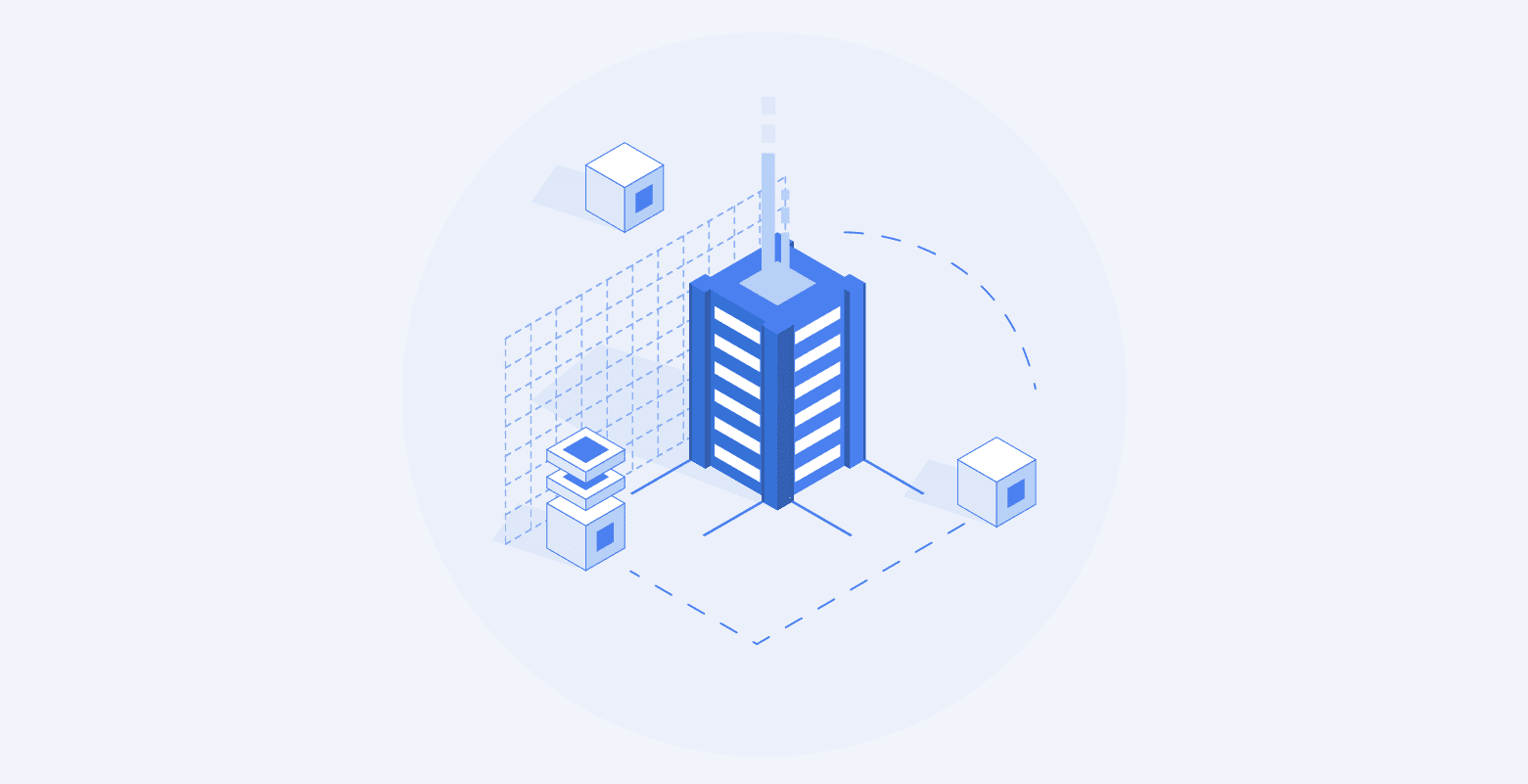
Leveraging the Power of Reverse Proxies: Enhancing Website Performance, Security, and Reliability
Introduction In the dynamic and ever-evolving landscape of the internet, where websites serve as the primary interface between businesses and their audiences, ensuring an exceptional user experience is paramount. Users expect fast loading times, secure interactions, and seamless accessibility to content. However, meeting these expectations can be a complex challenge, especially as websites face increasing demands and cyber threats. Enter the world of reverse proxies – a technological marvel that has emerged as a vital solution to optimize website performance, enhance security, and ensure unwavering reliability. Defining Reverse Proxies: A Gatekeeper of Excellence At its core, a reverse proxy is akin to a digital gatekeeper that stands between users and servers, orchestrating a symphony of benefits that elevate websites to new heights. Unlike traditional proxies that mediate requests on behalf of clients, reverse proxies are the unsung heroes that work on behalf of servers. They serve as the front line of interaction, intercepting client requests, optimizing content delivery, and fortifying security measures. Imagine the reverse proxy as a virtual bouncer at an exclusive party. It ensures that only legitimate guests (requests) gain access to the party (server) while keeping unwanted intruders at bay. In doing so, the reverse proxy adds a layer of control, optimization, and protection that directly impacts the website's performance and user experience. The Journey of a Request: Behind the Scenes To fully grasp the significance of reverse proxies, let's embark on a journey alongside a user's request for web content. When a user enters a URL into their browser, they set in motion a series of interactions that involve multiple servers and networks. The first stop is the DNS (Domain Name System), which translates the human-readable URL into the IP address of the server hosting the website. Once armed with the IP address, the user's request reaches the doorstep of the reverse proxy. Here, the reverse proxy takes center stage, diligently assessing the request's purpose, optimizing content delivery, and enhancing security. It evaluates factors such as the user's location, the server's availability, and the content's popularity, ensuring that the user receives the best possible experience. Optimization at its Core: Caching and Load Balancing Two crucial aspects define the essence of reverse proxies: optimization and distribution. Caching, a process akin to creating shortcuts for frequently accessed content, exemplifies optimization. The reverse proxy intelligently stores popular content in its cache, effectively bypassing the need to repeatedly retrieve the same data from the origin server. This leads to swifter content delivery, minimized load on the origin server, and an overall enhanced user experience. Distribution, on the other hand, is exemplified by load balancing – a dynamic process of distributing incoming traffic across multiple servers. A reverse proxy intelligently assesses server availability, traffic loads, and geographic proximity to route requests to the most suitable server. This not only prevents server overload but also ensures that users access content from the server nearest to them, reducing latency and boosting responsiveness. Security Reinforcement: Shielding Against Threats Amid the pursuit of optimization and seamless experiences, security remains a paramount concern. Herein lies another remarkable facet of reverse proxies – their role as vigilant sentinels safeguarding against cyber threats. By acting as a barrier between users and the origin server, reverse proxies effectively obscure the internal architecture of the server from potential attackers. Furthermore, reverse proxies possess the prowess to fend off Distributed Denial-of-Service (DDoS) attacks, a menace that can cripple websites by overwhelming servers with traffic. The reverse proxy identifies and blocks malicious IP addresses, ensuring uninterrupted service and bolstered security. Advantages of Reverse Proxies 1. Caching: Enhancing User Experience A central advantage of reverse proxies is their remarkable caching capability. By storing frequently requested data within their local cache, reverse proxies effectively mitigate the need for repeated queries to the origin server. This aspect becomes particularly beneficial when dealing with static web pages, as it drastically optimizes access times. Users experience faster loading times, thereby enhancing their overall browsing experience. The strategic caching of popular content not only minimizes latency but also optimizes server resource allocation, leading to improved website responsiveness. 2. Security: Safeguarding Your Digital Assets The role of reverse proxies as the first line of defense cannot be overstated. By acting as the public face of your website, they effectively conceal the intricate internal structure of your server from potential attackers. This serves as a potent deterrent against direct attacks on critical servers. One of the remarkable security aspects of reverse proxies is their proficiency in combating Distributed Denial-of-Service (DDoS) attacks. These proxies can swiftly identify and block malicious IP addresses, fortifying the website's security posture and ensuring uninterrupted service availability. 3. Faster Data Decryption: Optimizing Resource Utilization Encryption is a cornerstone of data security, but it can introduce processing overhead on servers. Reverse proxies play a pivotal role in alleviating this burden by decrypting incoming data before it reaches the server. By handling the decryption process, reverse proxies enhance server efficiency, effectively optimizing resource utilization. This optimization not only speeds up content delivery but also ensures that server resources are allocated judiciously, leading to improved overall performance. 4. Global Server Load Balancing: Seamless User Experience Across the Globe In the globally distributed landscape of modern websites, where servers are spread across various geographical locations, the challenge lies in ensuring consistent user experiences. Reverse proxies excel in global server load balancing, dynamically routing client requests to the nearest servers. This geographically optimized routing minimizes latency and significantly improves response times. Users accessing content from the closest server experience faster loading times, underscoring the reverse proxy's crucial role in offering seamless global experiences. FAQs About Reverse Proxies 1. Difference Between Reverse Proxy and Proxy Server: A reverse proxy and a proxy server differ in their operational focus. While a forward proxy safeguards clients' privacy and anonymity, a reverse proxy operates on behalf of the server. It manages requests, enhances security, optimizes performance, and plays a pivotal role in load distribution. 2. Benefits of a Reverse Proxy Server: The array of benefits offered by reverse proxy servers is comprehensive. From load balancing and global server load balancing to content caching, SSL encryption optimization, and DDoS attack protection, reverse proxies optimize traffic distribution, enhance performance, and fortify security measures. 3. Common Uses of Reverse Proxies: Reverse proxies find significant utilization in various scenarios. E-commerce websites leverage them for load balancing among multiple servers, ensuring high availability and seamless user experiences. Additionally, reverse proxies act as a shield, protecting main servers from malicious attacks and offering an added layer of security. 4. Setting Up a Reverse Proxy Server: The setup of reverse proxy servers has evolved to cater to modern demands. While traditional setups involve intricate hardware deployment, contemporary applications benefit from software-defined reverse proxy servers. Platforms like VMware NSX Advanced Load Balancer (by Avi Networks) simplify the operational complexity and enhance the effectiveness of multi-cloud architectures. Conclusion In the dynamic realm of online businesses, reverse proxies have evolved into indispensable tools for optimizing website performance, ensuring robust security measures, and guaranteeing unwavering reliability. Through strategic caching, security reinforcement, expedited data decryption, and global server load balancing, reverse proxies redefine the operational landscape of websites, fostering an enhanced user experience and solidifying a business's digital presence. As the internet continues its relentless evolution, businesses that harness the capabilities of reverse proxies position themselves at the forefront of technological innovation. By delivering exceptional digital journeys to their users, these businesses create a lasting impact and foster a digital ecosystem that thrives in an increasingly competitive digital world.

Understanding SSL(Secure Sockets Layer) and HTTPS Proxies: A Comprehensive Guide to Security, Anonymity, and Applications in the Modern Web Landscape
Introduction The Secure Sockets Layer (SSL), commonly referred to as HTTPS, has become a cornerstone of internet security and a vital tool for ensuring privacy, confidentiality, and data integrity in online communications. This article will explore what SSL is, the benefits and applications of SSL proxies, and the crucial role they play in various online activities, from web data scraping to brand protection. What is SSL or HTTPS? Secure Sockets Layer (SSL) is the standard technology responsible for establishing an encrypted link between a web server and a browser, ensuring the privacy, integrity, and authenticity of the exchanged data. It is denoted by the 'S' in HTTPS – the secure variant of the HTTP (HyperText Transfer Protocol). An HTTPS proxy is a type of proxy that uses the HTTPS protocol, adding an extra layer of security by encrypting the data traffic. This ensures that sensitive information such as login credentials, credit card numbers, and personal details remain concealed from unauthorized entities. Benefits of SSL / HTTPS Proxies Safer Connections- Encryption: By utilizing the SSL layer, all transmitted information between the requester and the target server is encrypted, thwarting potential eavesdropping or data manipulation.- Authentication: It ensures that communication occurs only with the intended server, minimizing the risk of interaction with fraudulent entities.- Data Integrity: The SSL layer guarantees that the transmitted data is not altered or corrupted during transmission. Increased Anonymity- IP Masking: An SSL proxy hides the user’s actual IP address, offering anonymity and reducing the risk of tracking or targeted attacks.- Enhanced Privacy: The encryption provided by SSL protects sensitive information and online activities from prying eyes, ensuring private browsing. How Do SSL / HTTPS Proxies Work? HTTPS proxies use the SSL/TLS (Transport Layer Security) protocols to provide end-to-end encryption. During the initial "handshake" process, the client and server agree on encryption parameters, including the selection of cryptographic algorithms and the exchange of secret keys. This leads to a secure tunnel, through which data flows encrypted, rendering it unintelligible to interceptors. Types of SSL Proxies Forward Proxy- Client-Side Protection: Decrypts and inspects outbound traffic, ensuring compliance with organizational policies and protecting against potential threats.- Access Control: Filters and restricts access to specific websites or content, aiding in bandwidth management. Reverse Proxy- Inbound Traffic Management: Intercepts and analyzes data coming from the web, providing additional security layers like DDoS protection.- Load Balancing: Distributes incoming traffic across multiple servers, optimizing resource use and ensuring a seamless user experience. Applications of SSL / HTTPS Proxies Web Data Scraping- Anti-Blocking Measures: Utilizes different IPs, reducing the risk of being identified and blocked, and thus facilitating large-scale data collection. Managing Social Media Accounts- Multiple Account Handling: Enables the legitimate management of various social media accounts without triggering security alerts. Ad Verification- Fraud Detection: Ensures that ads are being displayed as intended, identifying and combating fraudulent activities. Brand Protection- Intellectual Property Security: Monitors and prevents unauthorized use of trademarks, copyrights, or other intellectual properties. Unblocking Websites- Geo-Accessibility: Allows access to regionally restricted content by making requests from IPs within the permissible regions. Secure Connections- End-to-End Encryption: Safeguards sensitive data during transmission, rendering it secure against potential breaches. Anonymity- Complete Concealment: Enhances user privacy by masking personal information and browsing habits. Getting Limited Products- Access to Exclusive Releases: Facilitates the purchase of location-specific products through the use of proxies mimicking the required geographical location. By extending the applications and benefits of SSL, HTTPS proxies contribute significantly to an increasingly secure and anonymous online environment, meeting the diverse needs of users and organizations. Whether for personal privacy, corporate security, or specialized applications such as data scraping and ad verification, SSL / HTTPS proxies continue to be indispensable tools in the modern internet landscape. Conclusion SSL / HTTPS proxies offer a valuable combination of security, privacy, and versatility. Whether for scraping web data, managing social media accounts, or protecting a brand, these proxies provide a layer of protection that ensures safe connections and confidentiality. In an age where cyber threats are increasingly prevalent, SSL continues to be an essential component in maintaining secure and anonymous connections online. Its wide-ranging applications underline its importance in today’s interconnected digital landscape. By understanding and leveraging SSL, individuals and businesses can navigate the online world with confidence and security.

Unlocking the Power of Forward Proxies: Strengthening Security and Productivity
As the digital landscape evolves, the significance of network security and optimized user experiences becomes more pronounced. Forward proxies have risen as indispensable tools, catering to organizations of all sizes and industries. These versatile intermediaries facilitate an array of use cases, from safeguarding critical resources to enforcing robust security policies. This comprehensive article explores the multifaceted world of forward proxy use cases, shedding light on their role in modern network architectures. Understanding Forward Proxies: A Brief Overview A forward proxy, often referred to as a proxy server, acts as an intermediary between user devices and the internet. Its primary purpose is to manage and process internet requests on behalf of users, adding an extra layer of security, filtering, and control. By channeling all traffic through the proxy server, whether originating from office laptops or remote users, organizations can gain better control over data flow and enhance security measures. Empowering Security: Key Use Cases of Forward Proxies 1. Safeguarding Sensitive Data and Access Control: Forward proxies play a pivotal role in protecting sensitive resources within an organization's network. By intercepting and evaluating requests, administrators can implement precise access controls based on user roles. This mechanism ensures that critical resources such as servers, microservices, and databases remain accessible only to authorized personnel, bolstering overall data security. 2. Privacy and Identity Protection: An integral aspect of forward proxies lies in their capacity to anonymize user identities. By routing requests through the proxy server, users' direct interaction with the internet remains concealed, enhancing privacy. Similar to the functions of Virtual Private Networks (VPNs), forward proxies shield user identities, mitigating the risks of potential tracking or profiling. 3. Efficient Website Filtering and Blocking: Organizations often seek to regulate internet usage within their networks to prevent access to unauthorized or harmful websites. Forward proxies empower network administrators to curate lists of blocked domains, ensuring that employees adhere to corporate internet usage policies and minimizing security risks. 4. Facilitating Single Sign-On (SSO) Integration: Forward proxies bridge the gap for applications lacking native support for standard SSO protocols, aligning with organizations' requirements for streamlined user authentication. This is particularly valuable for legacy applications or those lacking built-in SSO capabilities. By serving as intermediaries, forward proxies enable secure and seamless SSO integration, enhancing the overall user experience. 5. Detecting and Managing Shadow IT: The rise of shadow IT, characterized by the use of unauthorized applications or services, poses significant security challenges. Forward proxies address this concern by closely monitoring and logging traffic from authorized user devices. This proactive approach empowers IT teams to identify unsanctioned apps and enforce access controls, guarding against potential data breaches. The Operational Mechanics of Forward Proxies Forward proxies function as intermediaries, intercepting and processing internet requests generated by user devices. As these requests traverse the network, they encounter the proxy server, which assesses them against predefined rules established by administrators. These rules encompass various criteria, ranging from website filtering to user authentication prerequisites. Once requests undergo evaluation, the proxy either permits or blocks them based on the configured rules. Approved requests are then directed to their designated destinations, whether internal resources or external websites. Upon receiving responses from these destinations, the proxy can further scrutinize and filter the content before transmitting it back to the user's device. This intricate process ensures that data flows through a secure and controlled pathway, minimizing the potential exposure to threats and vulnerabilities. Forward Proxies: Navigating Modern Network Security Challenges In a swiftly evolving digital landscape, where conventional security models exhibit limitations, forward proxies emerge as essential enforcers of enhanced network security. Their capacity to filter content, enforce access controls, and protect user identities contributes to a comprehensive security framework. As organizations navigate the complexities of remote work, cloud adoption, and escalating cybersecurity threats, forward proxies stand as a strategic solution aligned with the demands of modern network architectures. In Conclusion Forward proxies stand as adaptable guardians, shielding organizations from an array of security risks and complexities. Their critical role in regulating access, enhancing privacy, and reinforcing data protection underscores their significance in the realm of network security. By embracing forward proxies as integral components of their security strategies, organizations can confidently navigate the ever-evolving digital landscape, ensuring a secure and productive environment for both users and resources.

The Integral Role of Proxies in Travel Fare Aggregation: Challenges and Solutions
Introduction In today's interconnected world, travel fare aggregators play a critical role in providing travelers with the best deals on flights and hotels. Gathering vast amounts of data from multiple sources, these aggregators rely on proxies to enable seamless data collection without interruption. This article will explore the importance of proxies in travel fare aggregation, how they function, and the challenges faced in this industry. Travel Fare Aggregation Explained Travel fare aggregation involves the process of web scraping, a method of collecting large volumes of data from multiple websites, including flight fares and hotel listings. Given the high-security measures of these websites, scraping without proxies may lead to IP bans and geo-restrictions. Aggregator sites for modern travel use proxy services to make the data collection process simpler and more efficient. These proxies assist in gathering information from various sources like airline websites, travel agencies, and more, compiling them to present the best available deals to users. How Can a Proxy Help with Travel Fare Aggregation? 1. Outdated InformationChallenge: Flight and hotel rates are ever-changing. Special offers, seasonal discounts, and other factors can cause constant fluctuations. Aggregators must stay up-to-date.Solution: Proxies enable real-time, continuous monitoring of various global sources, ensuring that the data collected is always current. This allows aggregators to present users with the latest offers and deals. 2. Website ComplexityChallenge: Websites employing dynamic JavaScript elements can be challenging to scrape. They monitor user behavior and block suspicious IP addresses.Solution: Proxies disguise scraper activity by distributing requests over different IPs, making it difficult for websites to detect unusual behavior. This facilitates smooth navigation and data extraction. 3. Location RestrictionsChallenge: Different regions may have different pricing. Some websites restrict access based on geographical location.Solution: By using global IP addresses, proxies bypass location restrictions, allowing accurate retrieval of localized pricing and offers.4. Reliable Real-Time DataChallenge: Gathering precise, large-scale information swiftly from global sources can become cumbersome.Solution: A stable proxy network ensures constant data flow with a high uptime rate, making worldwide travel cost aggregation accurate and efficient. 5. Successful ScrapingChallenge: Increased reliance on web crawling has led to advanced monitoring and blocking strategies.Solution: Proxies enable rapid IP switching, making it challenging for websites to differentiate between human and automated visitors, ensuring successful data scraping. 6. No Location LimitsChallenge: Accurate global data collection requires proxies in every continent and relevant country.Solution: Networks like LIKE.TG provide global reach, ensuring precise travel fare aggregation and universal access to airline and hotel websites. The Biggest Challenges of Travel Fare Aggregation 1. IP Address BansChallenge: Continuous scraping from the same IP can lead to bans.Solution: Rotating proxy networks change the IP address regularly, making it difficult for websites to block access. 2. Anti-Scraping MechanismsChallenge: Mechanisms like CAPTCHAs or rate-limiting can hinder scraping activities.Solution: Proxy networks, combined with automated anti-blocking measures, detect and overcome these challenges, allowing smooth and uninterrupted data extraction. 3. SecurityChallenge: Scraper's real identity and network might be exposed to potential threats.Solution: Proxies act as a shield, hiding the user's real IP and providing an additional security layer against malicious attacks or data breaches. Conclusion Travel fare aggregation has become a critical component in the travel industry, allowing users to find the best deals and offers. The use of proxies ensures that aggregators can efficiently gather the necessary data from different sources without concerns of geo-restrictions, IP bans, or other restrictions. By employing effective practices and tools, including global proxy networks, travel fare aggregators ensure uninterrupted access to online data sources, regardless of location or other barriers set up by accommodation and airfare providers. Through constant innovation and the adoption of robust proxy networks, travel fare aggregation continues to evolve, offering travelers unprecedented access to the most competitive deals, no matter where they are in the world.

Mastering Review Monitoring with Proxies: A Comprehensive Guide to Global Insights, Reputation Management, and Competitive Success
Introduction In today's digitally connected world, customer reviews hold unprecedented power in shaping brands' reputations. They are valuable insights into customers' perceptions and preferences. This article explores how businesses can harness the power of proxies to monitor and analyze reviews, gain competitive advantage, and build a robust online reputation. Effortlessly Monitoring Reviews at ScaleThe Importance of Review MonitoringCustomer reviews are the lifeblood of online business, providing an in-depth look into what consumers truly think about products, services, and brands. They are not just fleeting opinions but tangible, data-driven insights that reflect consumer needs, preferences, and expectations. Consumer Insights: Understanding likes, dislikes, and requirements helps in enhancing products and services.Brand Perception: Reviews give a glimpse into how the brand is perceived in the marketplace.Decision Making: They guide business decisions by revealing what resonates with customers.Challenges in Review CollectionCollecting reviews on a vast scale is not as straightforward as it seems. It's laden with hurdles that can impede the collection process: IP Blocks: Websites often block IP addresses that they identify as scrapers, hindering data collection.CAPTCHAs: These are security measures that can stop automated scraping processes.Region-Specific Limitations: Some reviews might only be available in certain geographical areas, restricting a global view.The Role of ProxiesProxies are a solution to these challenges, acting as intermediaries that mask the true IP address: Masking IP Addresses: By using different IPs, proxies allow businesses to scrape without being detected.Overcoming Geographical Limitations: They allow access to region-specific content, enabling a more comprehensive collection.Enhanced Security: Proxies add an extra layer of security during the web scraping process. Benefits of Leveraging Proxies Global Reach and Region-Specific Insights Proxies enable businesses to gather data from various geographical locations, allowing them to: - Global Market Trends: Understanding international trends helps in crafting global strategies, identifying opportunities for market entry or product launch, and anticipating changes in consumer behavior.- Region-Specific Behavior Analysis: By having access to localized data, businesses can adapt their products, services, and marketing campaigns to meet the unique needs and preferences of different regions, thus fostering customer satisfaction and loyalty. Maintaining an Online Reputation Online reputation is vital for any brand, and proxies can play an essential role in managing it: - Negative Review Management: Proxies enable rapid detection and analysis of negative feedback, allowing for swift responses. Apologies, solutions, or compensation can turn a dissatisfied customer into a loyal one.- Celebrating Success: Emphasizing positive reviews, acknowledging customer praises, and sharing success stories can enhance brand image and customer trust. Gaining a Competitive Edge Proxies contribute to staying ahead of the competition through: - Immediate Action: Real-time insights allow businesses to act quickly to emerging trends, solve problems before they escalate, and seize market opportunities.- Marketing Leverage: Positive reviews can be highlighted in advertising and social media campaigns, enhancing brand credibility and attracting new customers. Understanding the Target Audience through Various Datasets - Types of Datasets: Comprehensive data collection includes star ratings, textual reviews, video testimonials, etc., painting a complete picture of customer sentiment.- Strategic Alignment: Analyzing and applying these insights ensures that products, services, and marketing efforts are in line with customer needs and preferences, ultimately enhancing business performance. Strategic Customer Review Analysis For eCommerce - Product Improvement: Review analysis helps in identifying product flaws, leading to quality improvements, better designs, and innovation.- Enhanced Shopping Experience: Reviews may highlight issues in the shopping experience, leading to improved navigation, better support, or streamlined checkout processes. For Marketing Teams - Targeting Accuracy: Understanding customer feedback helps in creating more targeted marketing campaigns, leading to increased engagement.- ROI Enhancement: Refining strategies based on reviews ensures that marketing investments yield better returns. The 5 Best Ways to Collect Buyer Reviews Methods and Tools - Coding Options: From Python to Java, various coding languages and libraries allow for tailored scraping solutions.- Automated Tools: Using scrapers like Amazon scraper, businesses can automate the data collection process, making it more efficient and scalable. Proxies for Specific Websites - Smooth Data Collection: Utilizing specific proxies for platforms ensures uninterrupted access, reduced chances of blocking, and consistent data quality. Ready-to-Use Review Data and Advanced Web Unlockers - Datasets: Ready-to-use data can significantly save time and resources, enabling immediate analysis and application.- Unlockers: Tools like advanced web unlockers facilitate bypassing barriers such as CAPTCHAs or logins, ensuring smooth and efficient data collection. Overall, the multifaceted benefits of leveraging proxies, coupled with strategic analysis of reviews, provide businesses with powerful tools to enhance products, refine marketing strategies, manage online reputation, and gain a competitive edge. The synergy of these elements leads to more informed decisions, customer satisfaction, and sustainable growth. Conclusion: The Power of Review Monitoring and Proxies Review monitoring is an essential practice for businesses aiming to understand their audience and stay competitive. Whether scraping reviews for eCommerce, analyzing feedback for marketing strategies, or using proxies to unlock global insights, the techniques described in this guide provide a roadmap for effective review monitoring. With a multitude of methods to collect reviews, businesses can tailor their approach based on needs and capabilities. From Beautiful Soup and Java to web scraping tools and proxies, the options are vast. What remains constant is the valuable role of customer reviews in driving informed business decisions. Proxies, as a significant enabler in this process, not only offer cover for IP addresses but also unlock access to specific geographic locations, ensuring a comprehensive view of global customer sentiments. In a rapidly changing business landscape, proxies and review monitoring tools are more than a necessity; they are the key to thriving in the digital age. Unlock the full potential of your business today with reliable review monitoring and proxy solutions. Say goodbye to the hassle of data collection and welcome a new era of ease, efficiency, and insight.
相关产品推荐






















